Soft greens and versatile greys are the interior world’s new power couple, delivering calm without ever feeling flat. Color experts note that gentle shades such as Quietude or York Gray give bedrooms a “go-with-anything” backbone while still adding subtle personality. Psychologists add that green’s short light wavelength relaxes the nervous system, lowering stress and encouraging deeper sleep — exactly what a bedroom needs. Designers forecasting 2025 favor dusty sage and subdued olive teamed with taupe or pewter greys to create grounded, down-to-earth sanctuaries. Because slightly grayed greens echo nature’s layered complexity, they meld effortlessly with stone-toned neutrals for a look that feels sophisticated and biophilic at the same time. Ready to explore twenty fresh green and grey bedroom ideas that prove the palette’s range?
1. Mid-Tone Sage Walls and Charcoal Accents
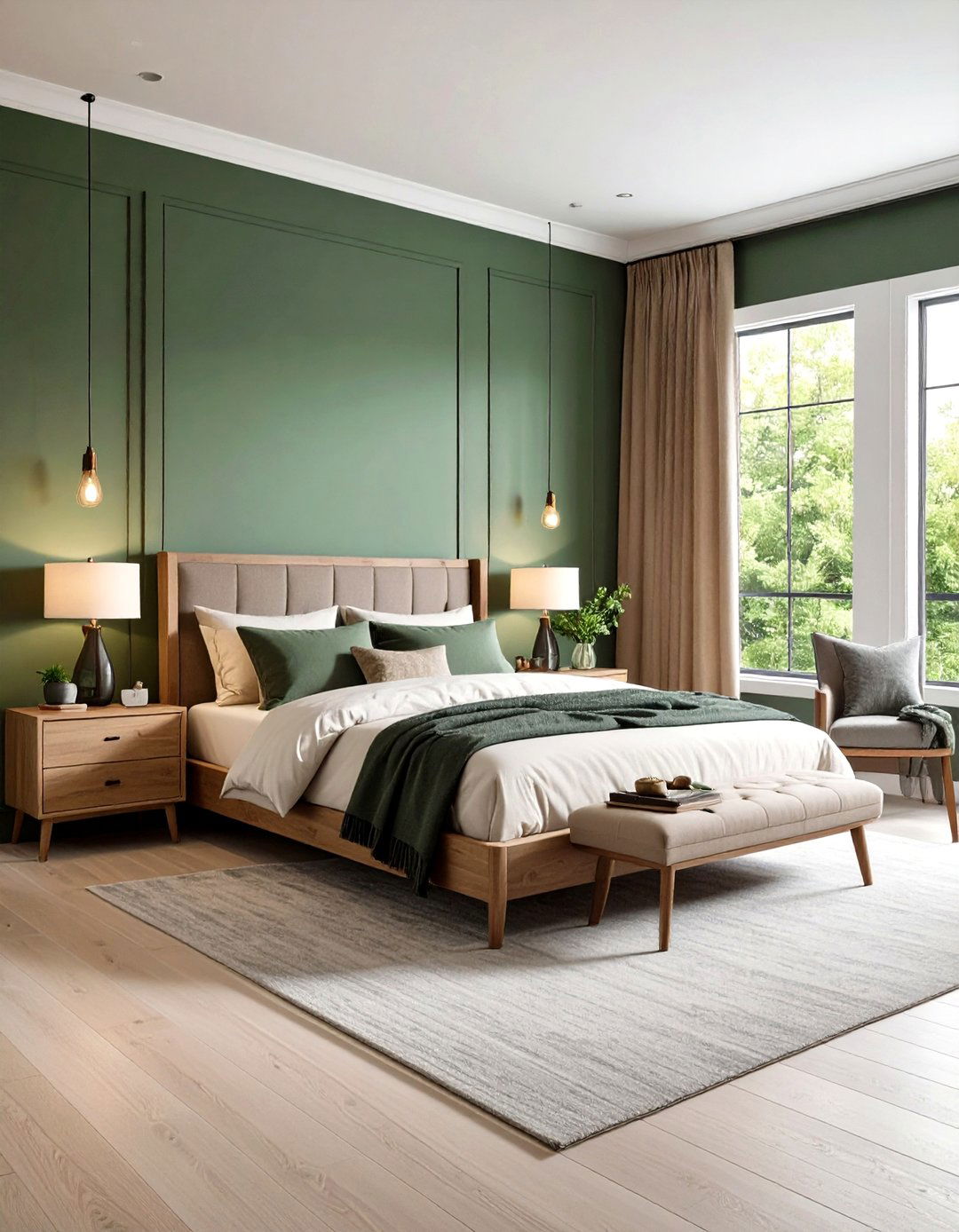
An engaging green and grey bedroom starts with a mid-tone sage such as designers’ favorite Saybrook Sage, whose muted mix of green and grey behaves like a warm neutral. Paint every wall in this hue, then outline windows, door casings, or built-ins in matte charcoal to deliver crisp architectural definition without visual heaviness. The charcoal grounds the palette while letting the sage glow softly in changing light. Because sage naturally lowers heart rate and stress , you can keep furnishings simple—pale-oak nightstands, a linen-white quilt—knowing the color itself supplies serenity and understated character.
2. Forest Green Accent Wall with Dove-Grey Surrounds
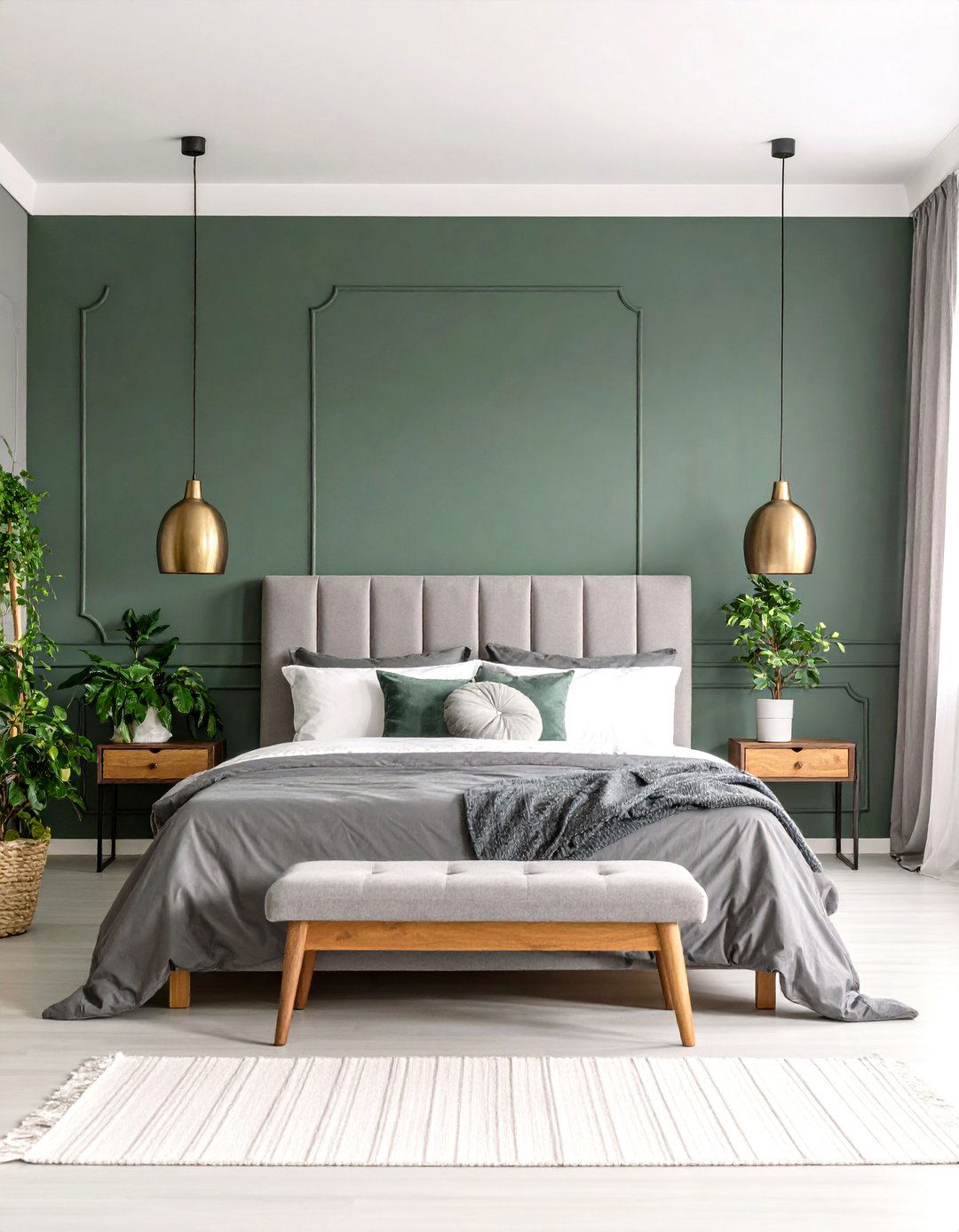
Unlike fully saturated rooms, a single forest-green statement wall adds drama while preserving the airiness of light-grey surrounds. Pick the headboard wall for the deepest evergreen, then let the remaining walls breathe in dove grey so the bold hue feels curated, not cavernous. Slate-grey linens echo the accent while potted foliage or a velvet cushion repeats the green for cohesion. A lighter grey ceiling and bright white trim bounce illumination back into the space, and warm-brass lamps act as an elegant bridge between cool neutrals and lush color.
3. Olive Drapes over Cloud-Grey Canvas
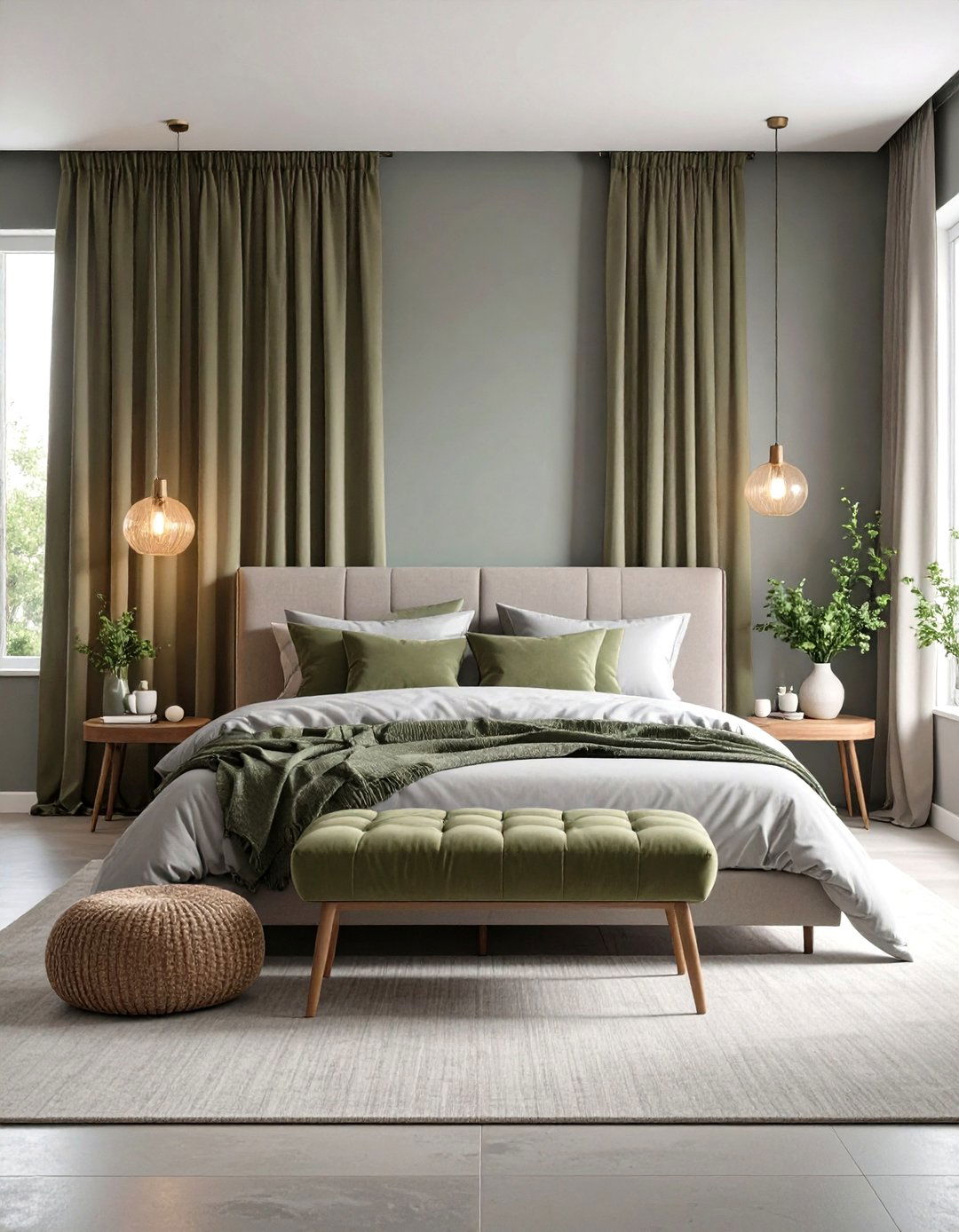
Consider a cloud-grey paint on every wall and ceiling, then introduce floor-to-ceiling olive-green linen curtains for depth and warmth. Scandinavian-influenced designers rely on muted olives because the shade brings the outdoors in without feeling busy. Keep bedding pale grey and add an olive bolster to repeat the tone. The result is a green and grey bedroom that looks tailored by day yet cocoons you in rich fiber-filtered light at night. Test the drape fabric in morning and evening conditions to fine-tune undertones before you commit.
4. Dusty Sage and Taupe Layering
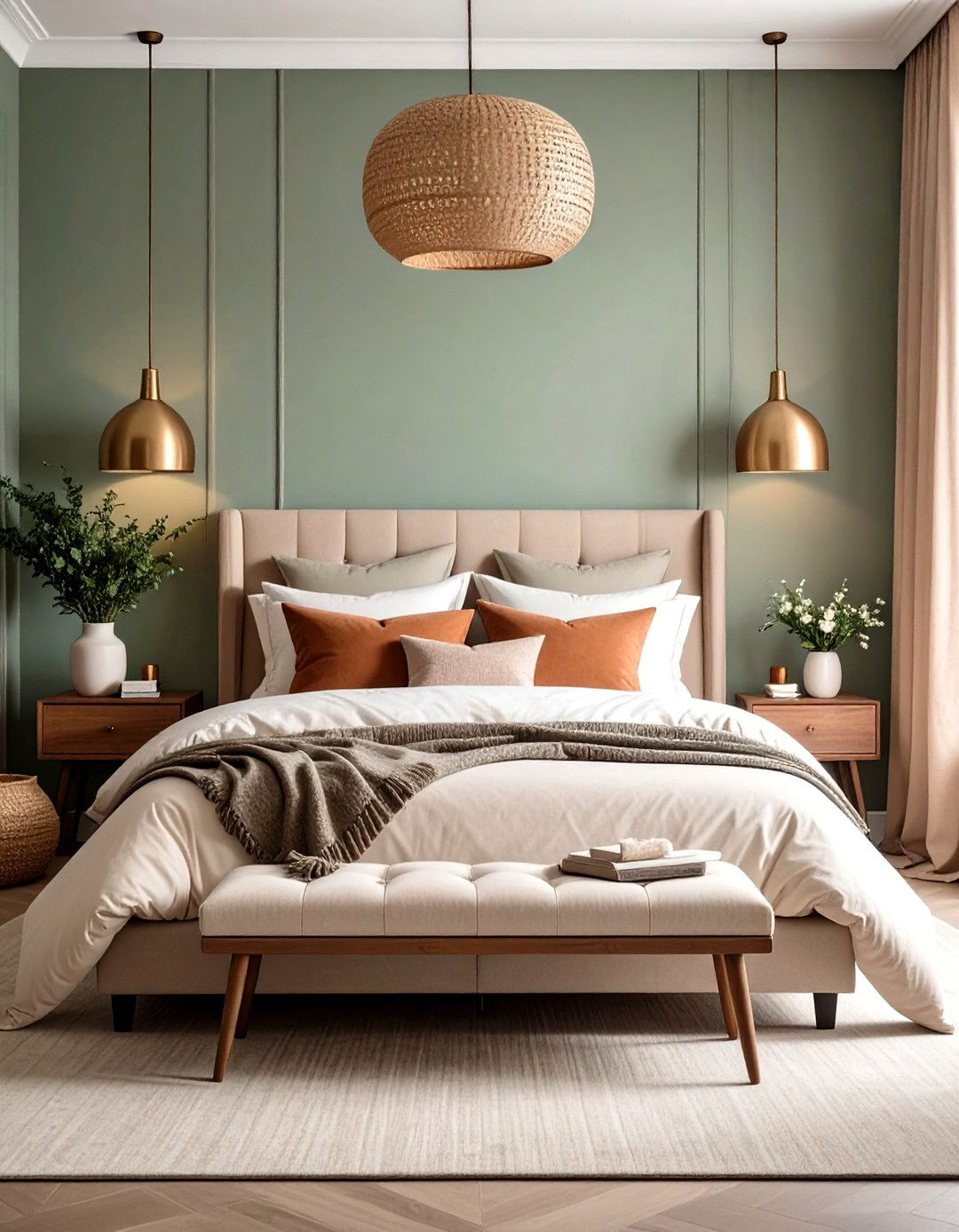
Owing to its grey undertone, dusty sage behaves almost like a neutral, making it a perfect partner for soft taupe sheets and clay-coloured throws. Start with dusty sage walls, then layer taupe, ivory, and greige textiles so the palette looks effortless, not matchy. A brushed-nickel reading lamp echoes the cooler side of the spectrum, while a single terracotta pot pulls out the warmer notes, preventing monotony. This muted mix is ideal for renters because both colors are forgiving on imperfect walls.
5. Eucalyptus Green Meets Cool-Grey Scandinavian Minimalism
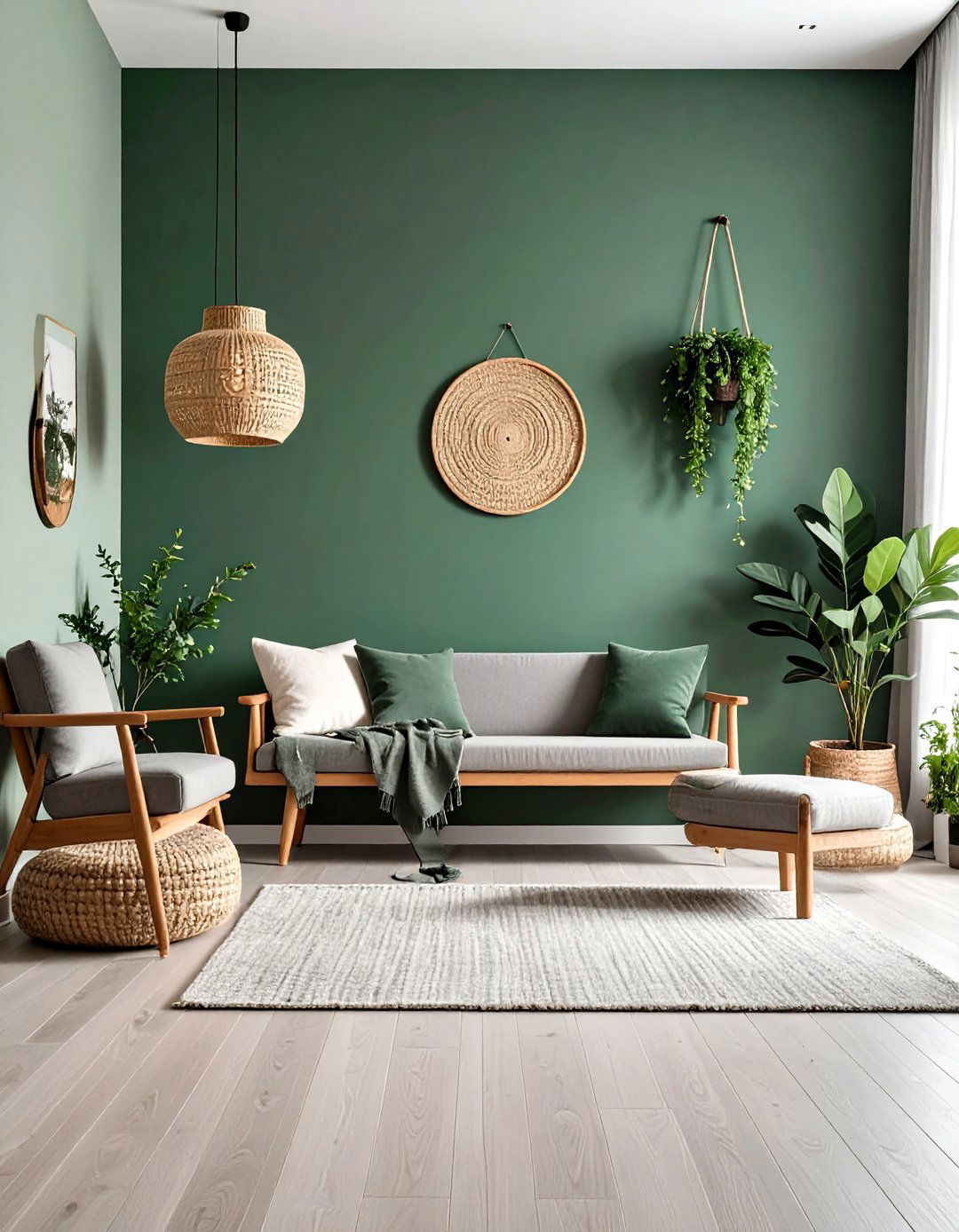
Looking for serenity with a modern edge? Use a cool, eucalyptus-green feature wall—its blue undertone makes the shade contemplative and sleep-friendly —and pair it with whisper-grey floors and furniture. A single birch-wood bench and a softly textured wool rug nod to Nordic minimalism. Because the palette is inherently quiet, a sculptural black wall lamp becomes purposeful art rather than clutter.
6. Color-Drenched Sage with Soft-Grey Furniture
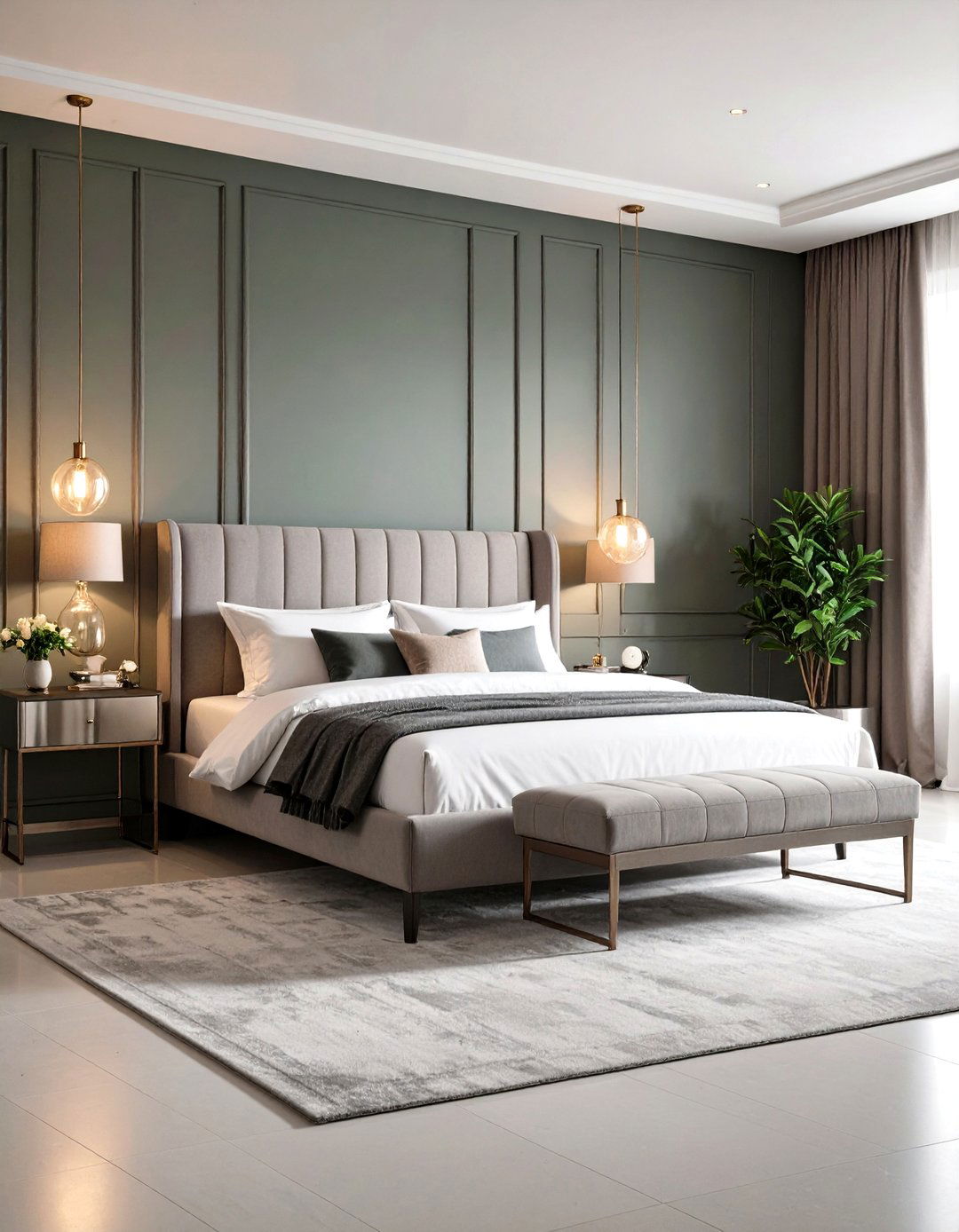
The bolder route is to color-drench: paint walls, ceiling, and trim in the same misty sage, letting grey emerge through furniture instead. A dove-grey upholstered bed, pewter bedside tables, and silvered glass lamps ground the space so it never feels like a green box. Add white artwork for contrast and install dim-to-warm bulbs to keep the cocoon soothing after dark.
7. Built-In Saybrook Sage Storage and Pewter Bedframe
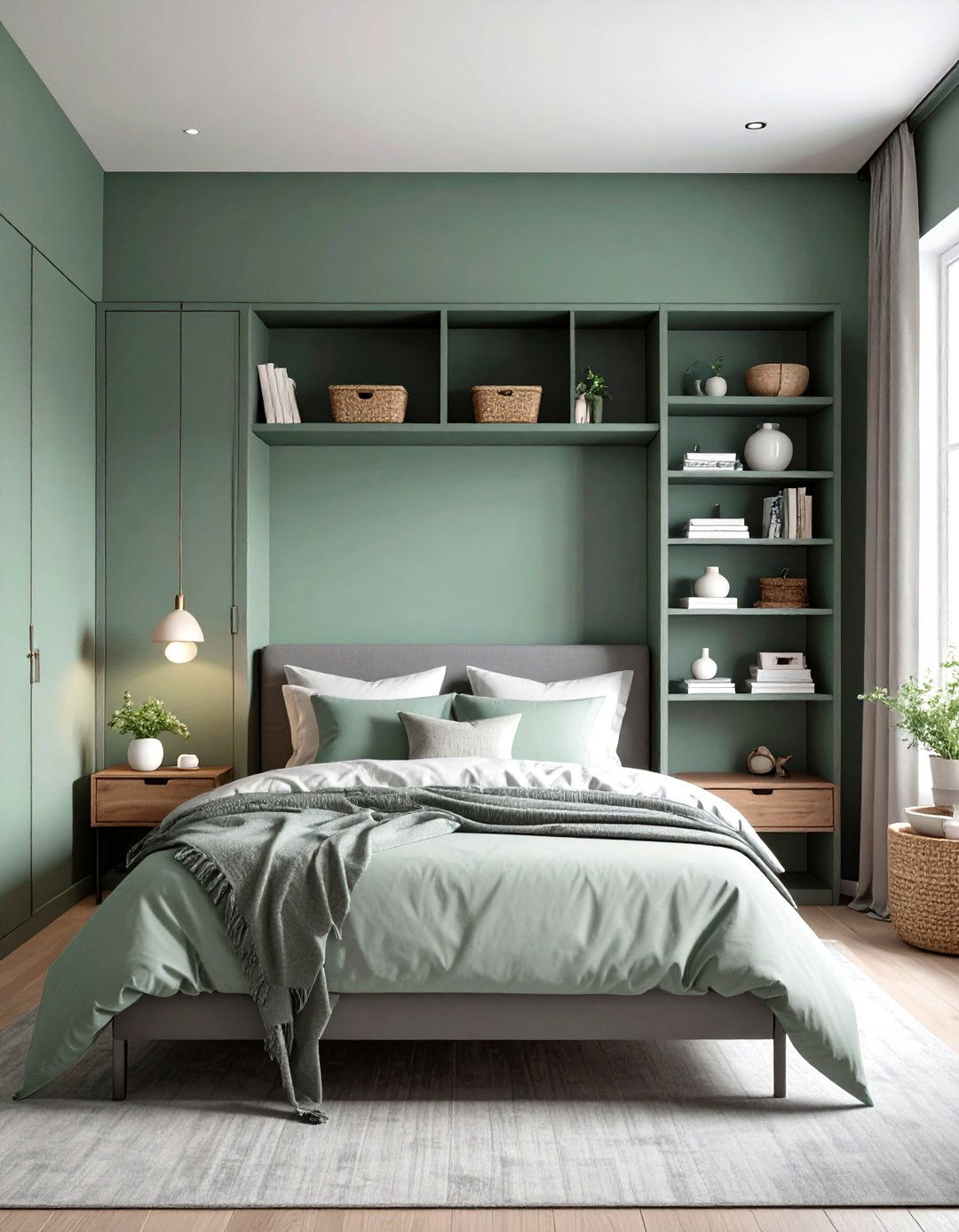
Take advantage of alcoves by fitting built-ins and painting them the same sage used on the walls; designers praise the shade’s ability to read like “characterful neutral” in changing light. Slide a simple pewter-grey metal bedframe against this seamless backdrop. Open shelving finished in sage turns everyday books and baskets into styled moments, while the grey metal adds a crisp industrial edge.
8. Moss-Green Paneling and Light-Grey Linen Layers
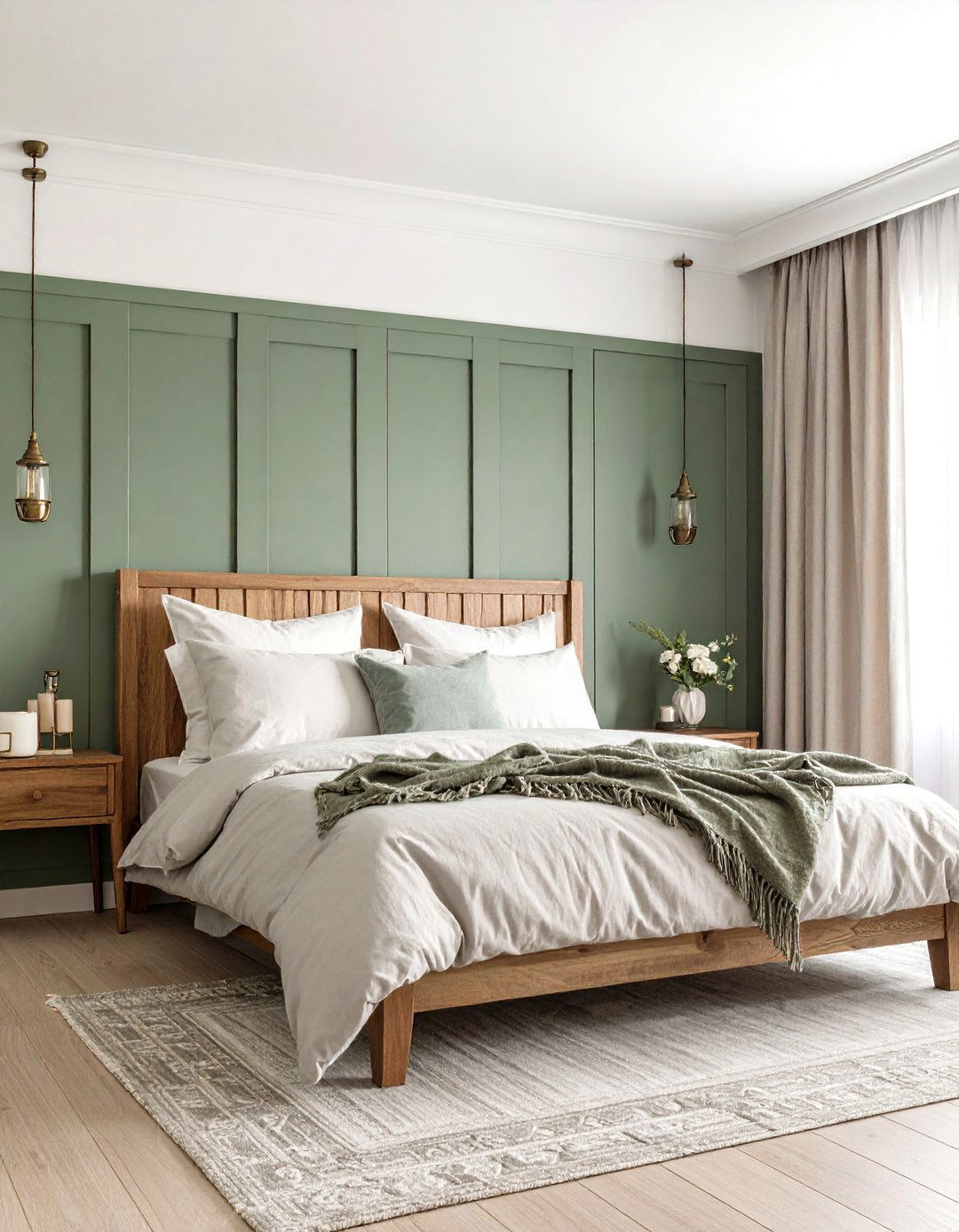
For period homes, install a three-quarter-height tongue-and-groove panel in moss green and let the upper wall breathe in warm white. Pair with light-grey linen bedding so the classic paneling doesn’t feel heavy. Designers spotlight moss tones for their cozy but sophisticated presence , especially when matched with pale woods and aged-brass sconces.
9. Pistachio Paint with Concrete-Grey Textures
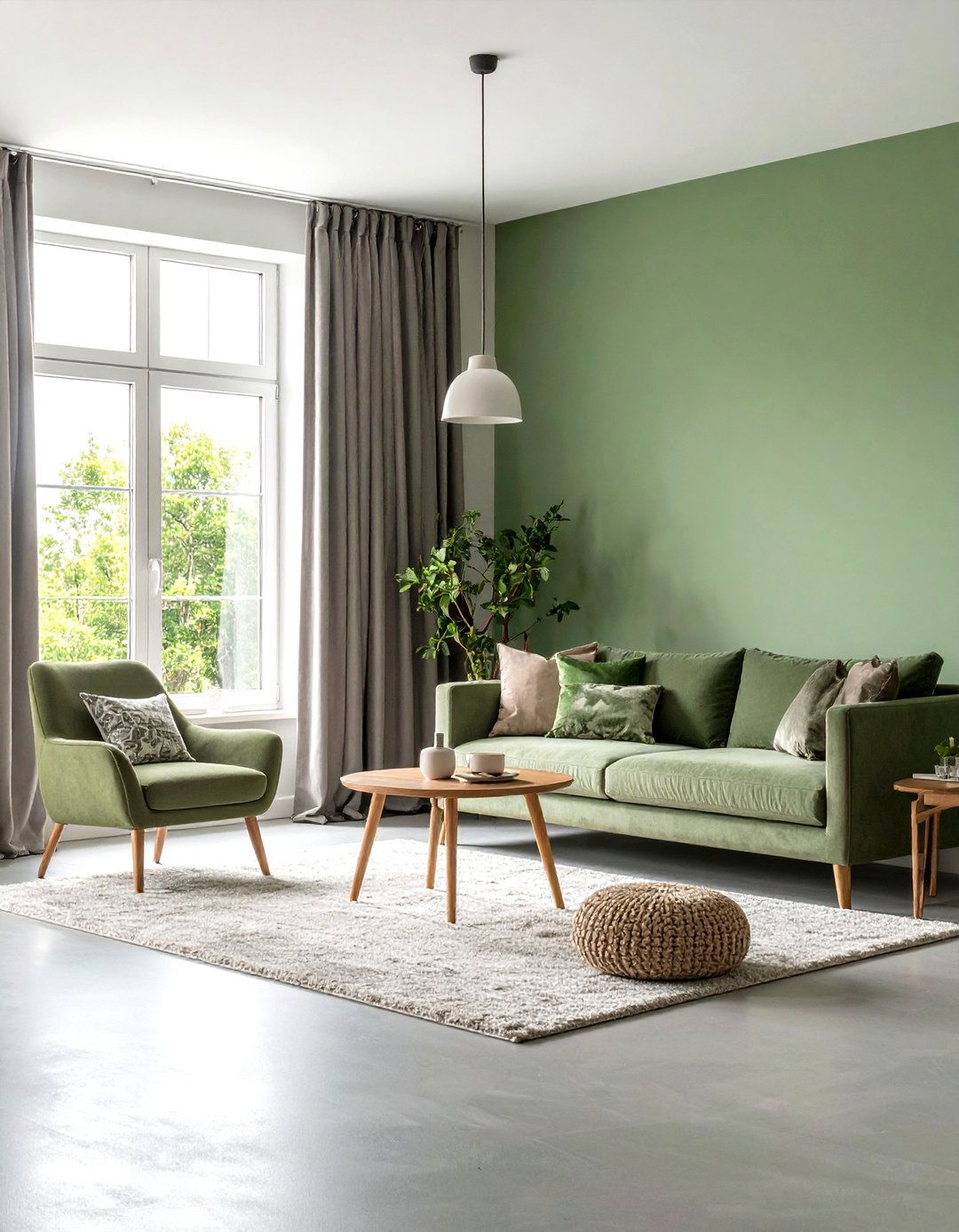
Surprisingly, a playful pistachio can work in an adult space when balanced by textural greys. Color experts list soft green shades among the timeless “go-with-everything” hues. Keep floors concrete-look vinyl or polished cement, layer gauzy grey curtains, and introduce pistachio only on walls and cushions for a fresh, café-modern vibe.
10. Indoor Jungle against Silver-Grey Walls
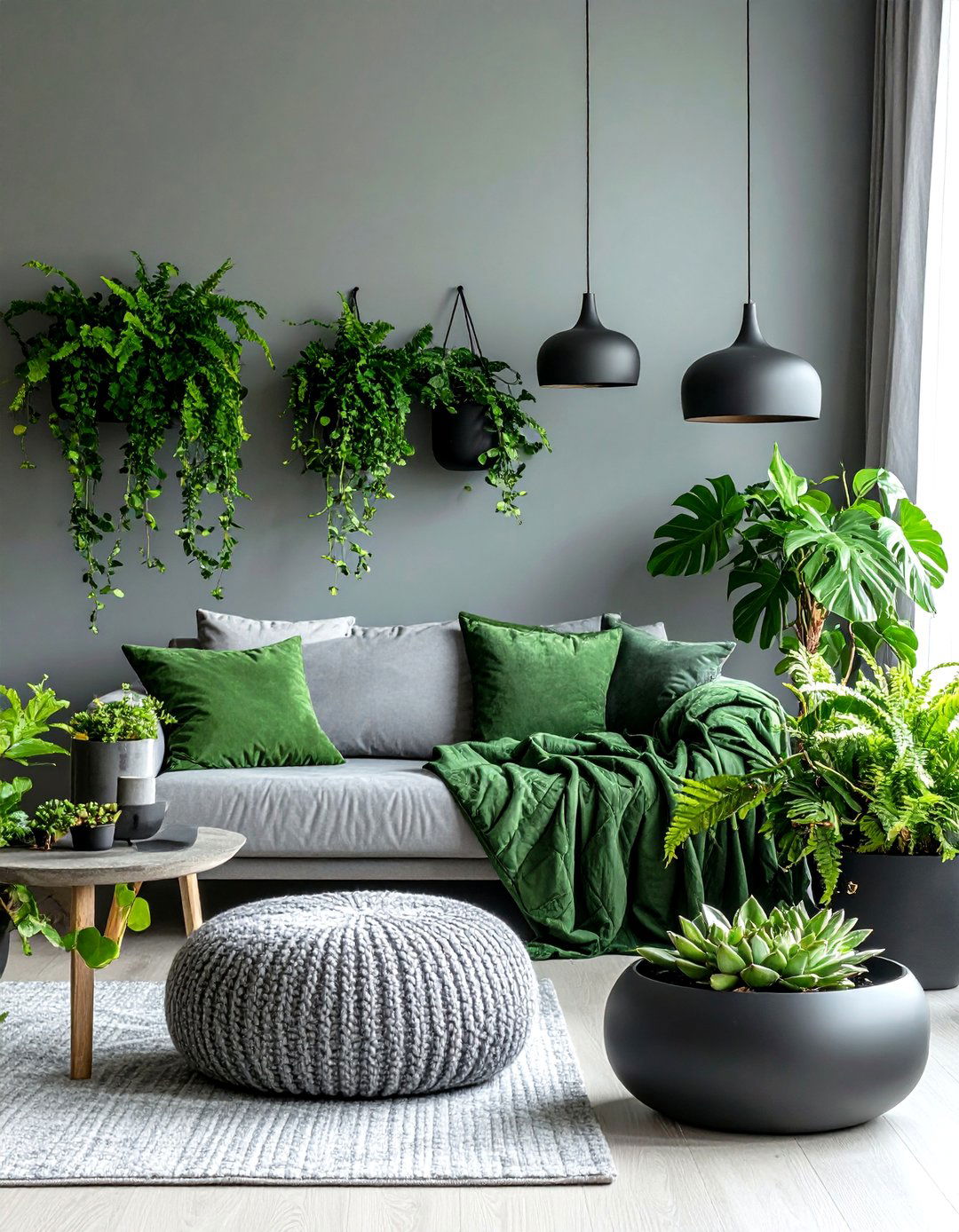
If you prefer paint light, flip the scheme: coat walls in soft silver grey, then bring in leafy saturation with oversized plants, mossy throw pillows, and a green quilt. Biophilic studies show greenery reduces cortisol and fosters focus , so the living accents do more than decorate—they literally help you unwind. Keep pots matte charcoal to echo the grey backdrop.
11. Sage, Grey and Metallic Gleam

Contrast sage walls with flashes of metallic to elevate the palette. Designers recommend marrying muted greens with brass or gold for instant sophistication. A brushed-gold chandelier, antique-brass picture frames, and brass-edged mirrors catch evening light, while smoky-grey velvet pillows ground the shimmer so it feels curated, not flashy.
12. Two-Tone Paneling: Graphite Base, Mist-Green Crown
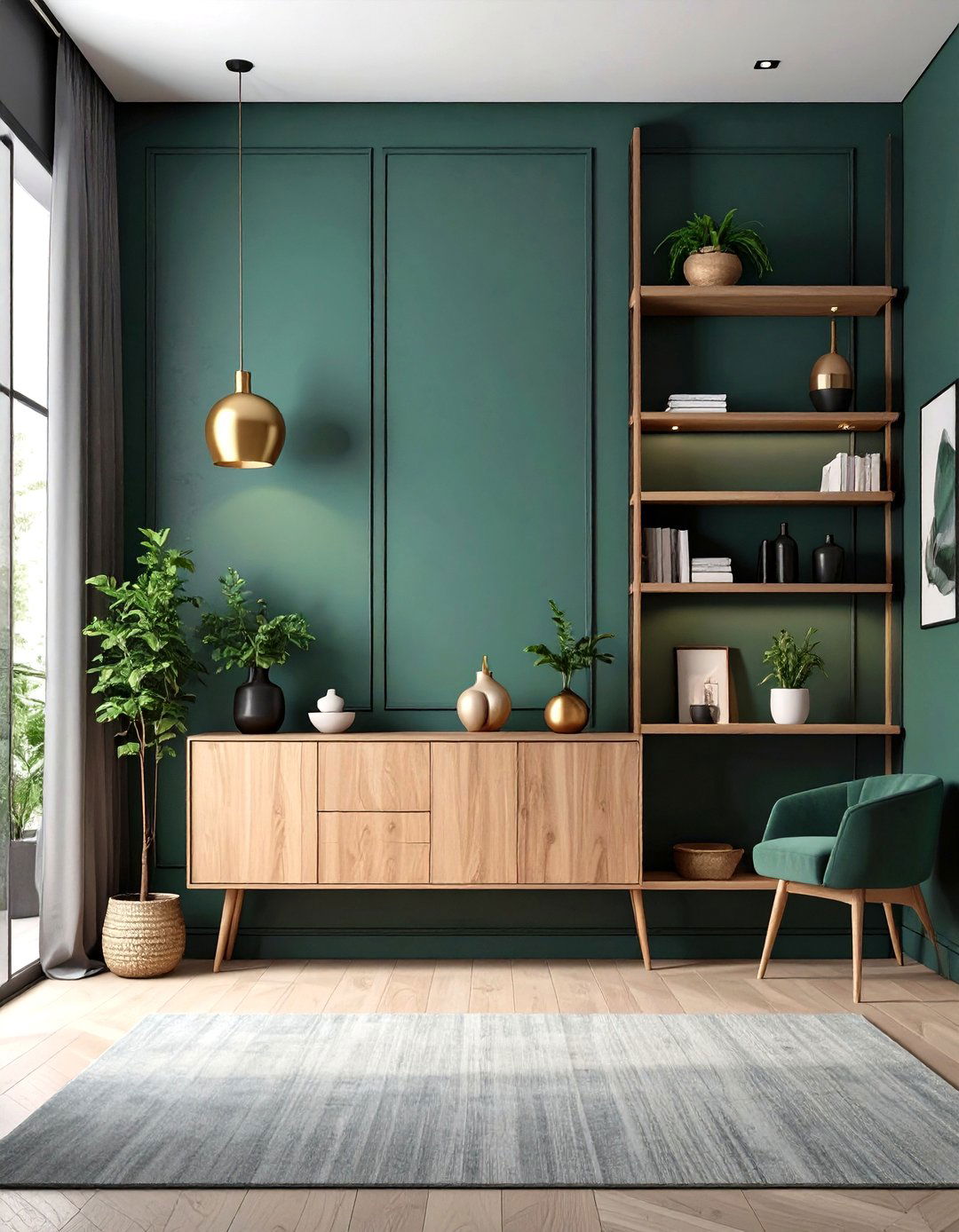
Shortly uplift a small room with horizontal two-tone paint. Apply dark graphite-grey up to chair-rail height, then switch to a misty green above. The darker base hides scuffs and visually anchors the bed; the airy green opens the upper half, tricking the eye into added height. A slim picture-led shelf painted to match the rail provides display space without new holes.
13. Mint-Green Ceiling over Greige Walls
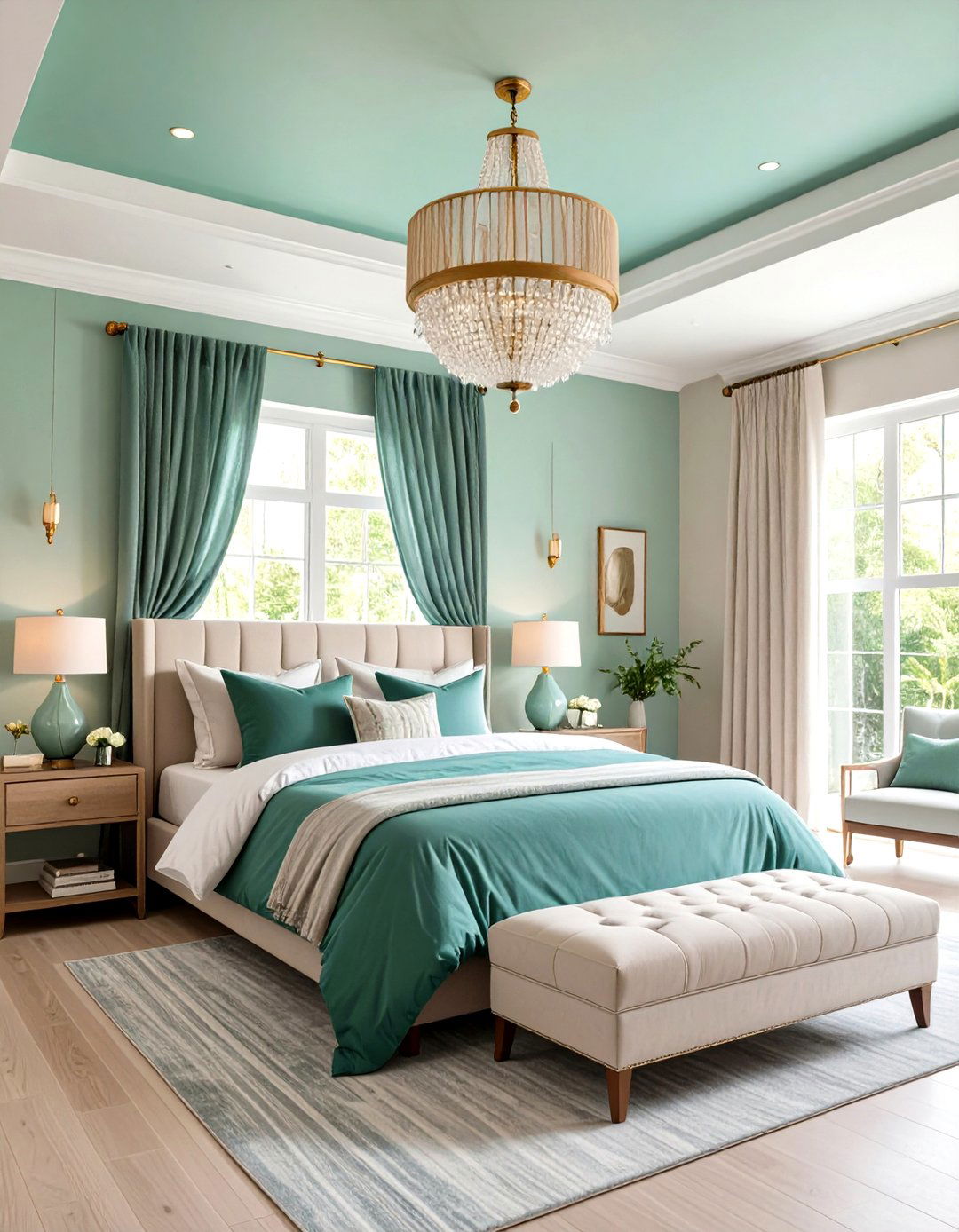
Surprisingly, painting only the ceiling in a grayed-mint draws the eye upward and makes standard rooms feel lofty. Keep the walls greige so the mint glows without competing. A graphite-striped duvet links ceiling and walls, while sheer curtains in pearl grey allow daylight to bounce green reflections around the room.
14. Emerald Velvet Headboard and Pewter Décor
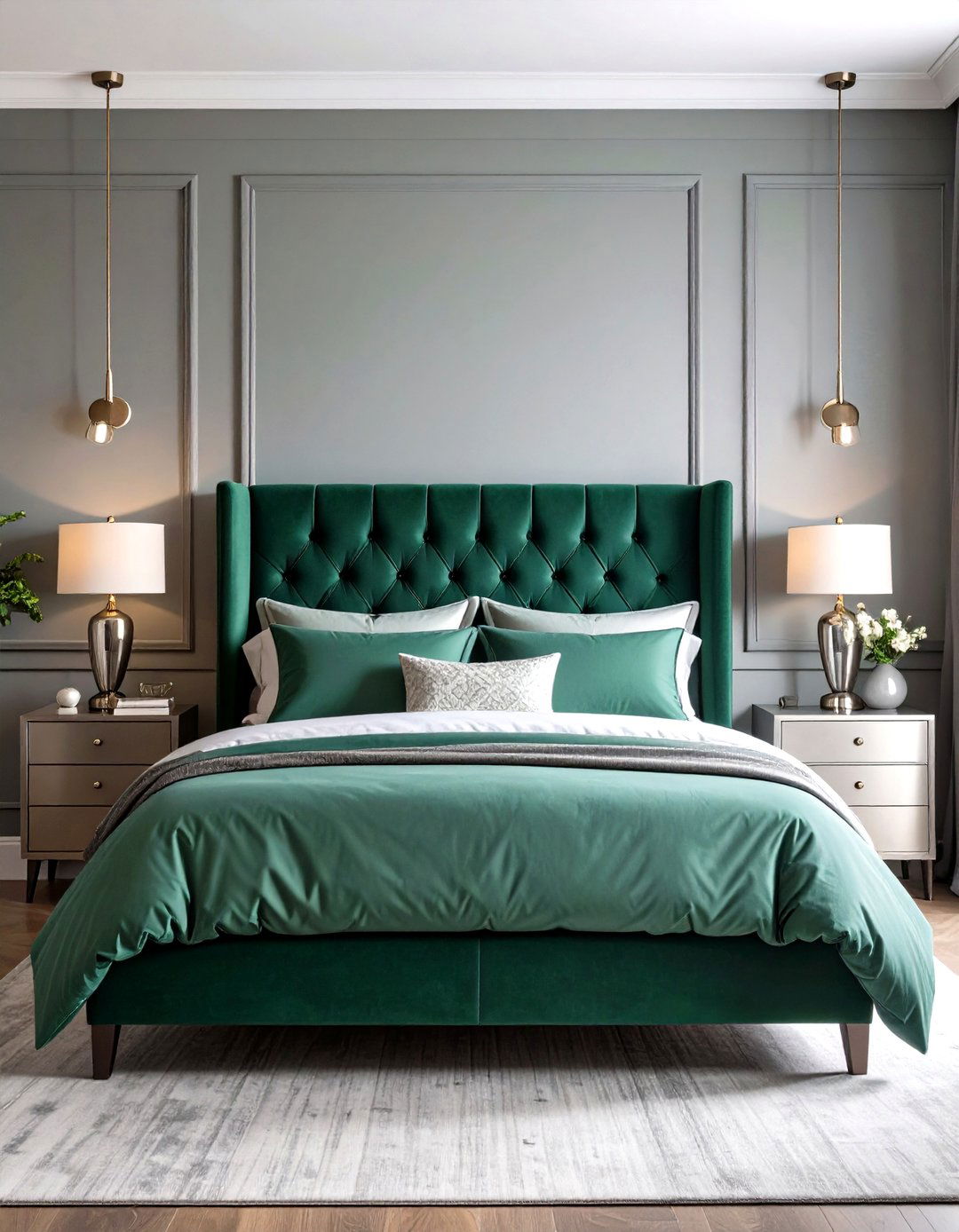
Certainly, statement upholstery can carry the color load. A tall, emerald-green velvet headboard pops against pebble-grey plaster walls. Echo the jewel tone with a single art print, then let pewter bedside lamps and chrome drawer pulls cool things down. The balance feels luxurious yet restful.
15. Grey Base with Green Artwork Statement
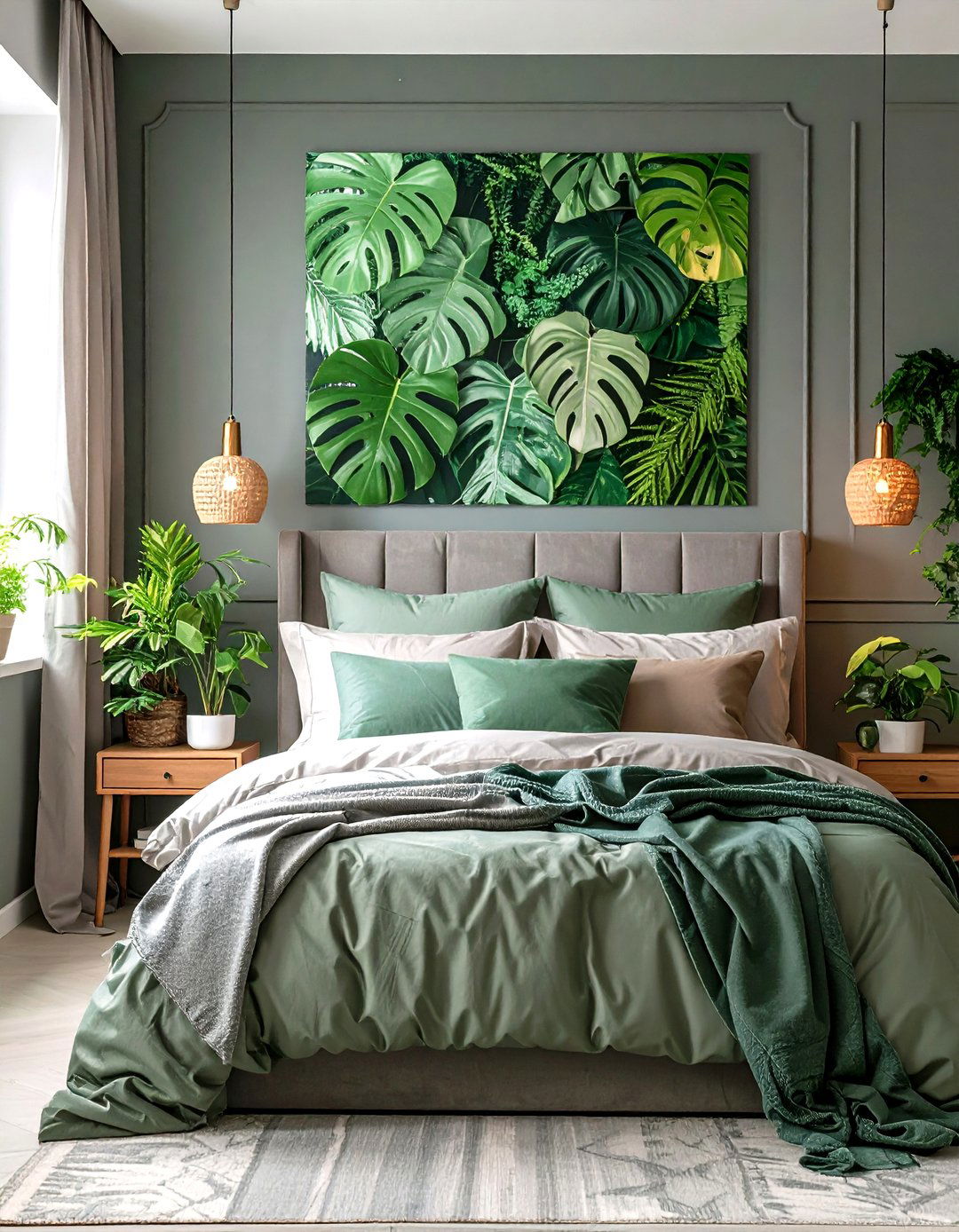
For rental-friendly impact, keep walls classic grey and invest in oversized botanical art bursting with layered greens. A trio of canvases over the bed functions like a built-in mural, updating the room without a drop of paint. Repeat one leaf tone in a throw to tether the art to the bedscape.
16. Soft Lichen Green with Warm-Grey Carpets

Lichen green—softer than sage, dustier than mint—wraps walls in near-neutral comfort. Pair it with warm-grey loop-pile carpeting and chunky knit throws to create textural depth without color clutter. A bedside stool in raw oak adds an organic note that plays well with the forest-floor palette.
17. Ombre Fade from Slate to Sage

What if you can’t choose one shade? Create a hand-painted ombre that starts slate grey at the floor and fades into pale sage at the ceiling. The gradient blurs wall boundaries, making the room feel higher and softer at once. Keep furniture simple so the paint remains the focal point.
18. Charcoal-Grey Wallpaper with Botanical Green Prints
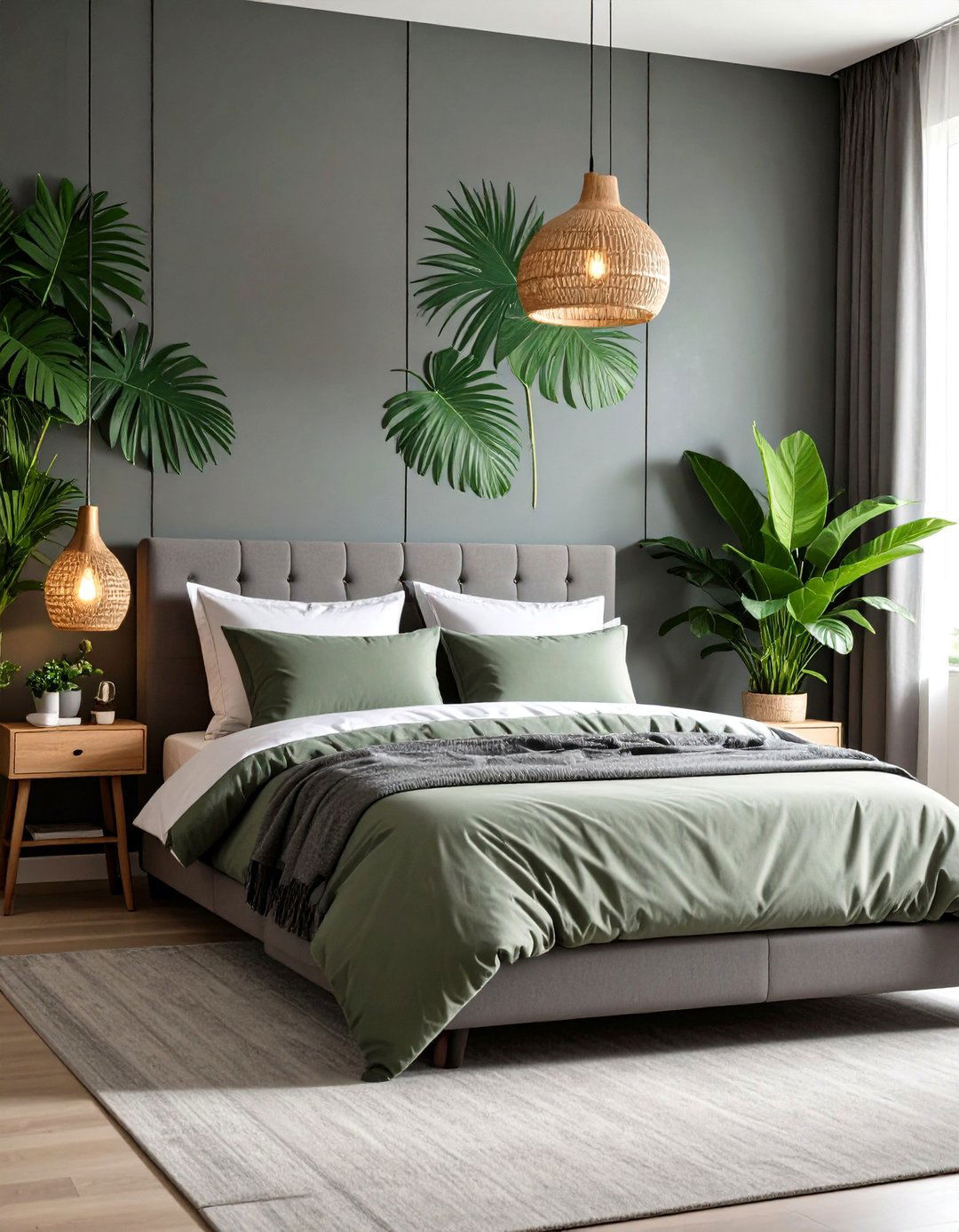
Wallpaper delivers pattern without loose clutter. Opt for a charcoal ground scattered with green palm silhouettes; the dark base cossets sleepers while the foliage feels lively. Because the print supplies both palette colors, bedding can stay quiet—think putty-grey sheets and a single sage lumbar pillow.
19. Sustainable Zero-VOC Green-Grey Palette
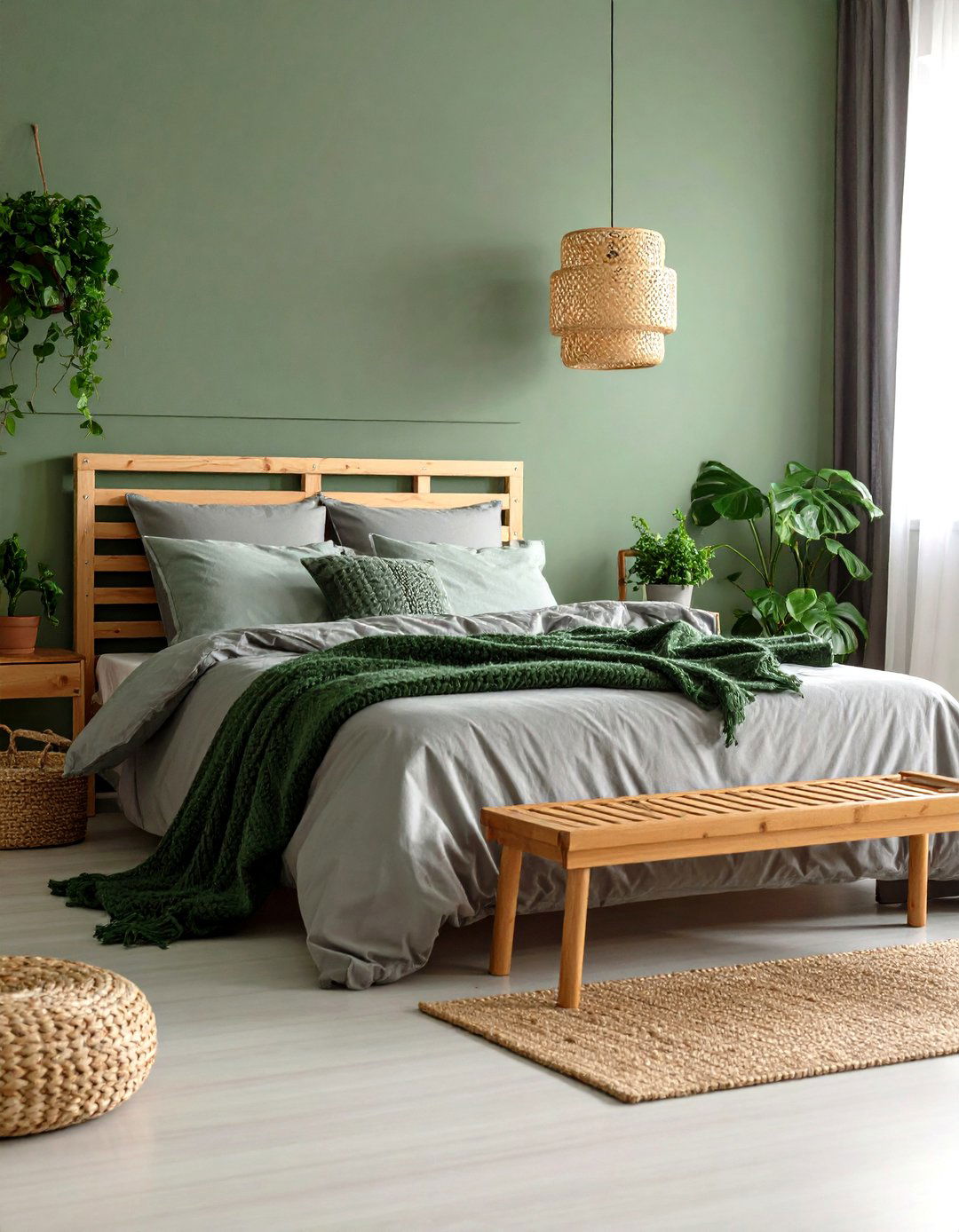
Eco-minded decorators can specify low- or zero-VOC paints in sage and grey to reduce indoor toxins; many brands now offer plant-based pigments that keep air quality high. Combine organic-cotton grey linens with a recycled-wool green throw for a room that’s as healthy as it is handsome. A bamboo bench completes the environmentally conscious story.
20. Seasonal Switch: Swappable Green Textiles on Grey Core
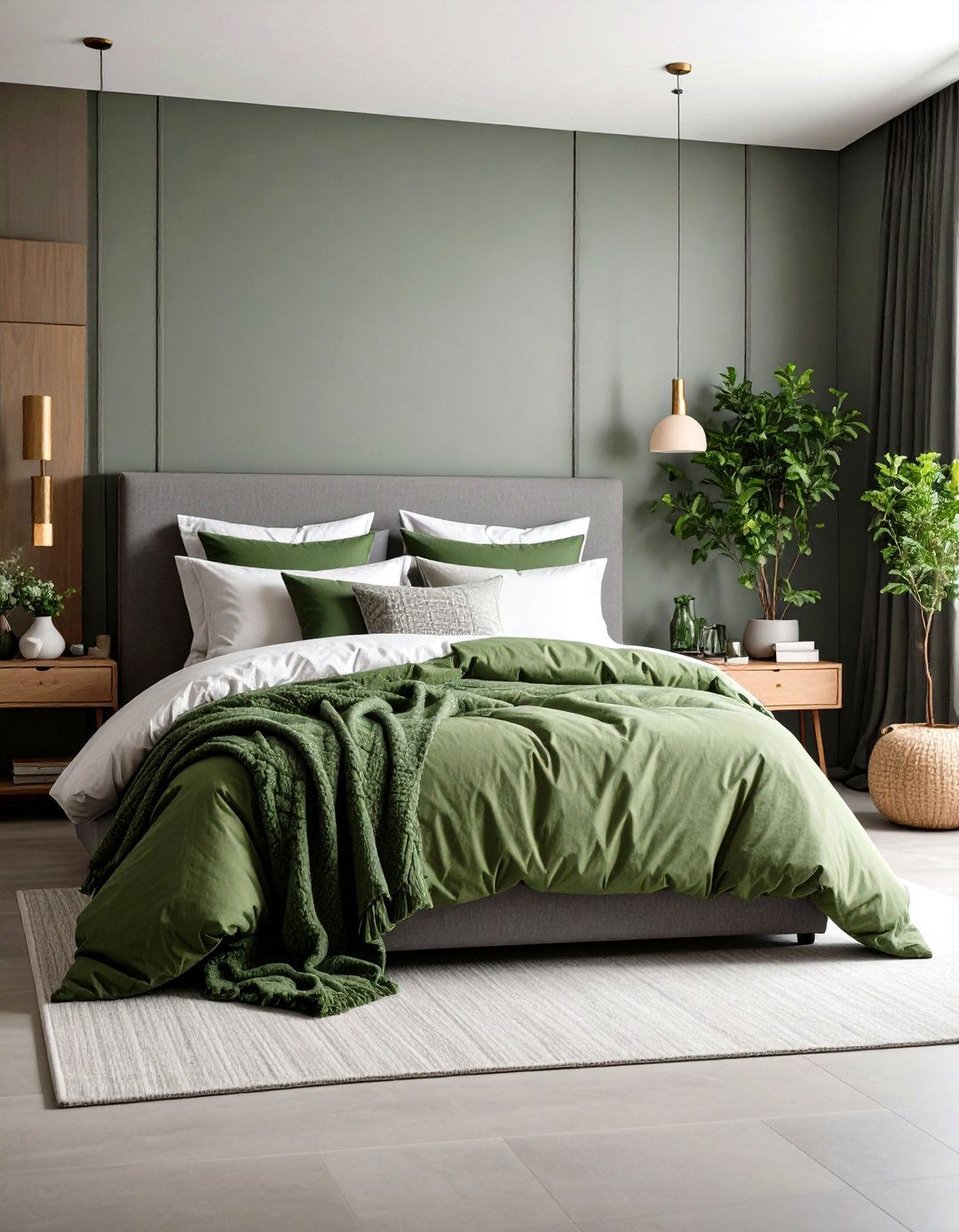
Finally, build a timeless grey shell—walls, bedframe, major furniture—then rotate green accents with the seasons. Spring might see mint seersucker duvets; autumn could introduce deep moss quilts. The core stays neutral, but each textile swap gives the green and grey bedroom fresh life, saving both money and landfill space.
Conclusion:
Pairing any shade of green with any temperature of grey lets you dial your bedroom’s mood from spa-like subtle to jewel-box bold. Sage and charcoal calm the senses, forest and dove create modern drama, while pistachio and concrete deliver café-cool charm. Because both hues read as nuanced neutrals, they welcome natural textures, metallic flashes, and biophilic accents without clashing. Whether you color-drench in muted sage or merely introduce emerald velvet against soft pewter walls, these twenty strategies prove a green and grey bedroom can be endlessly refreshed, always contemporary, and naturally restorative.



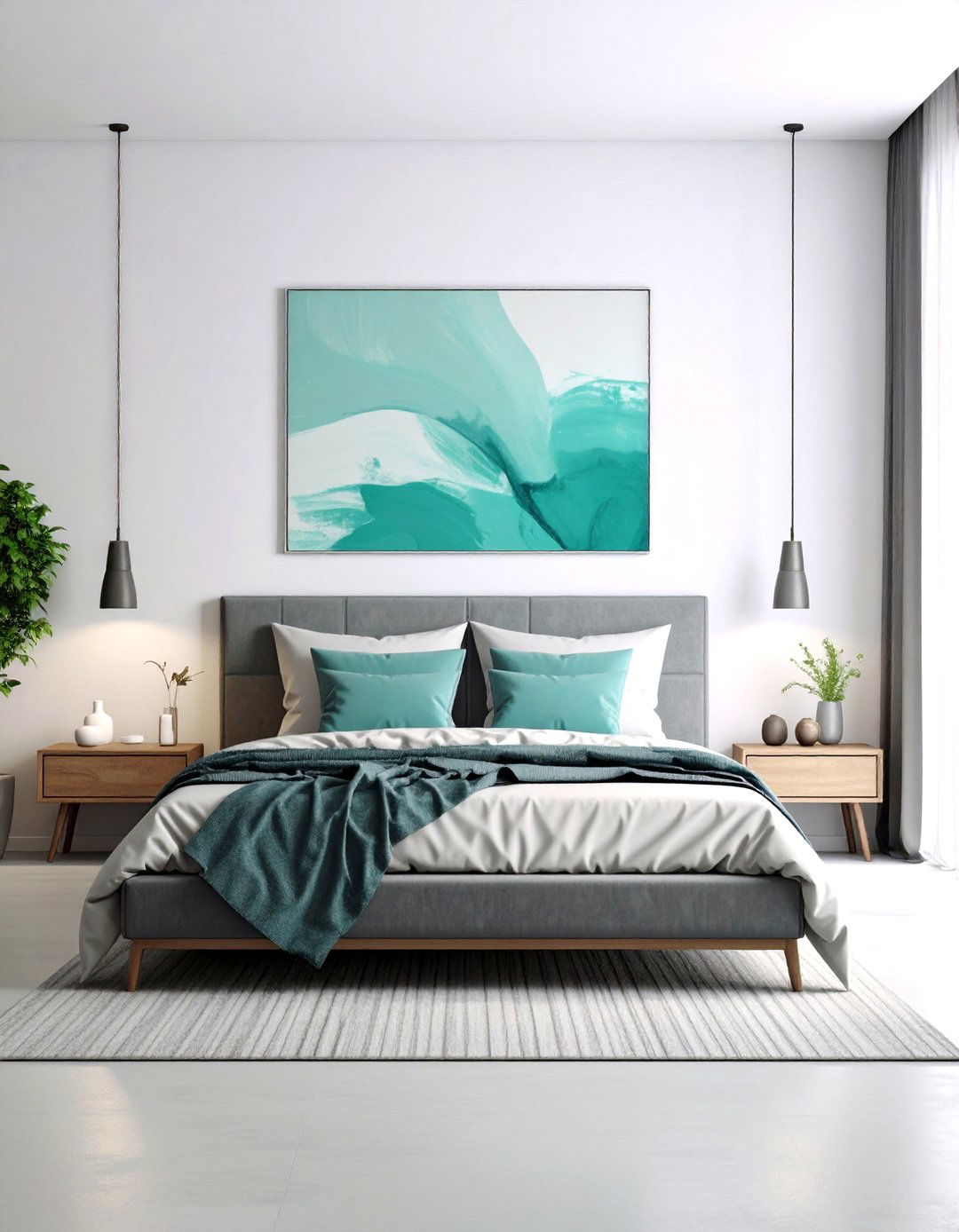
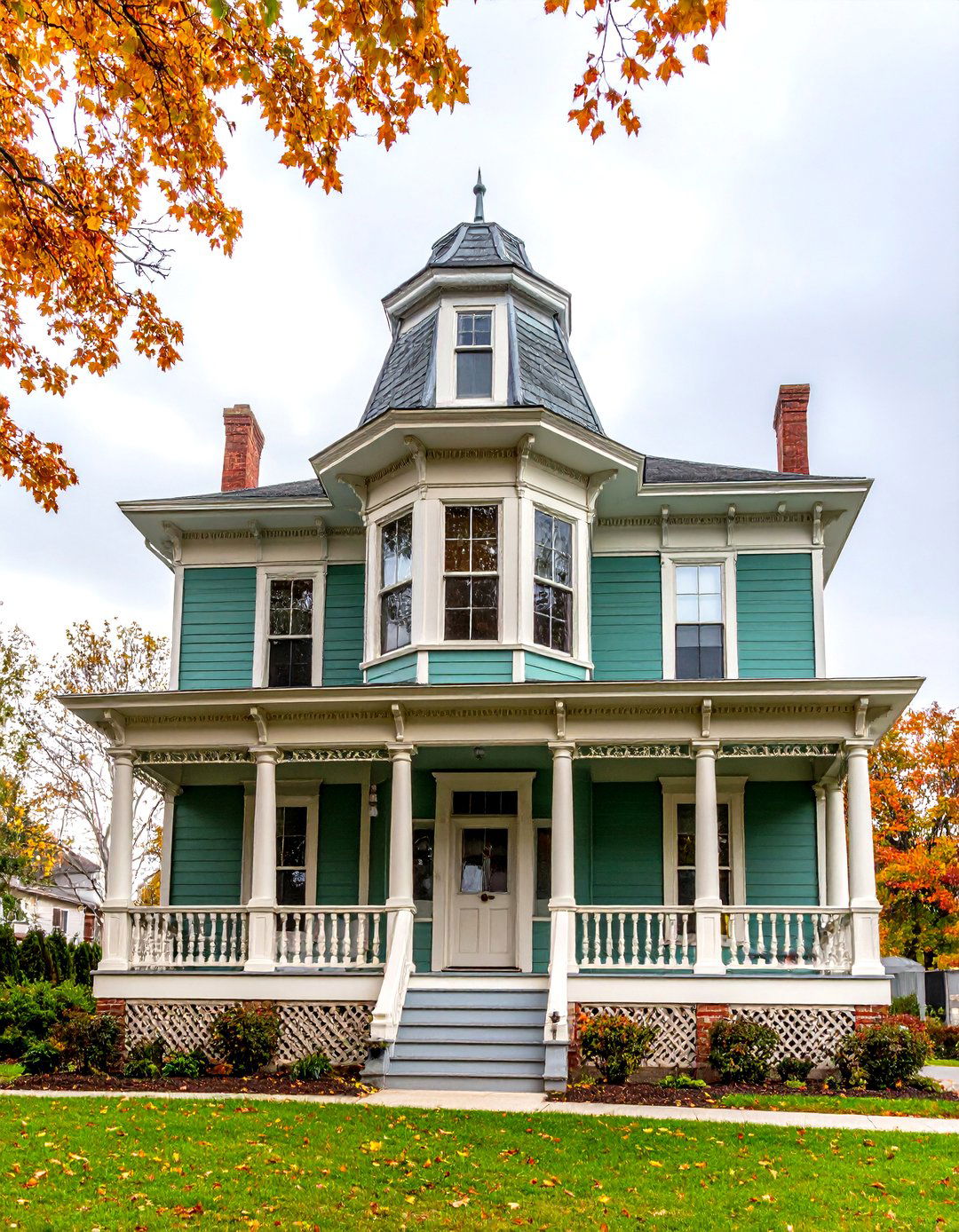
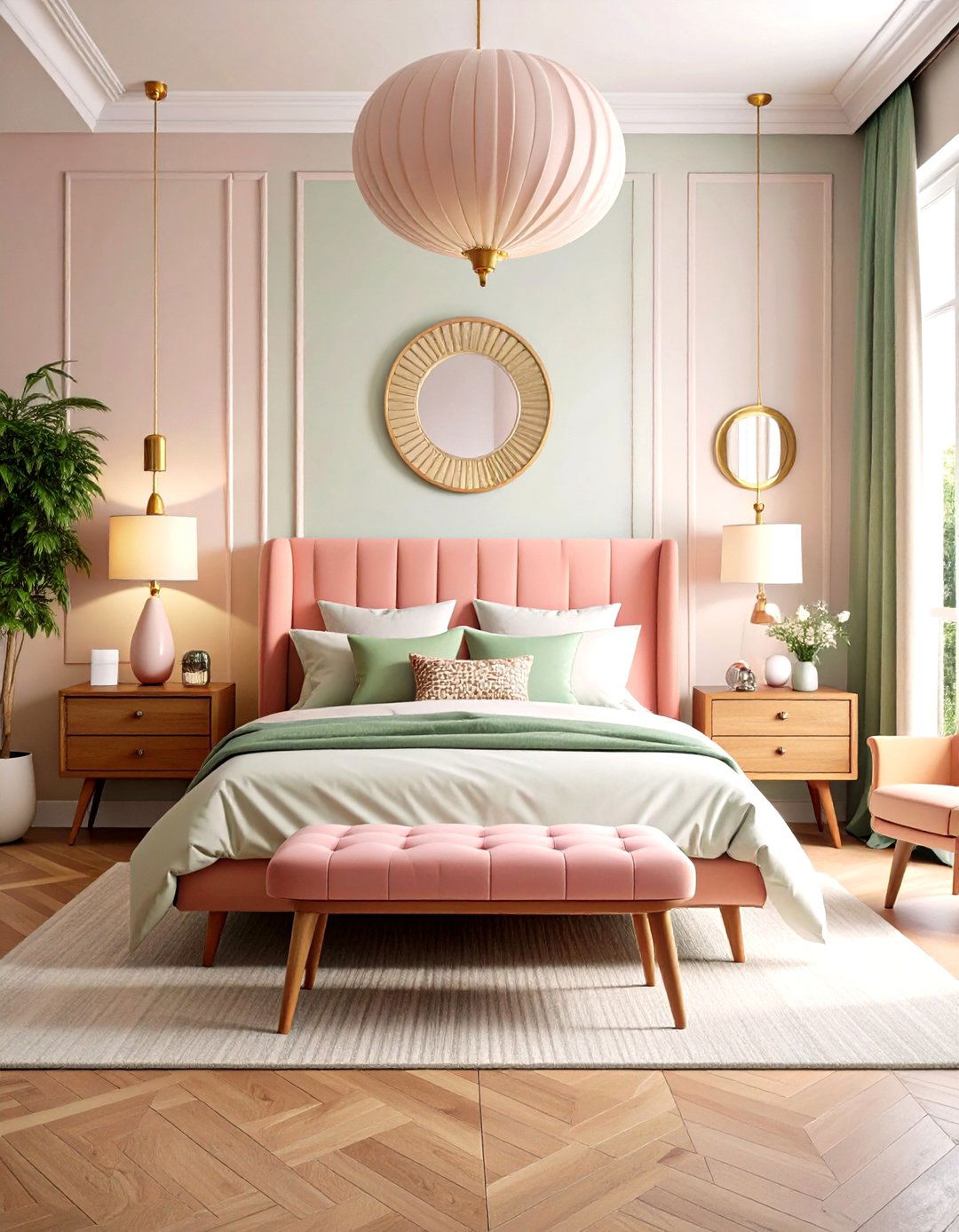
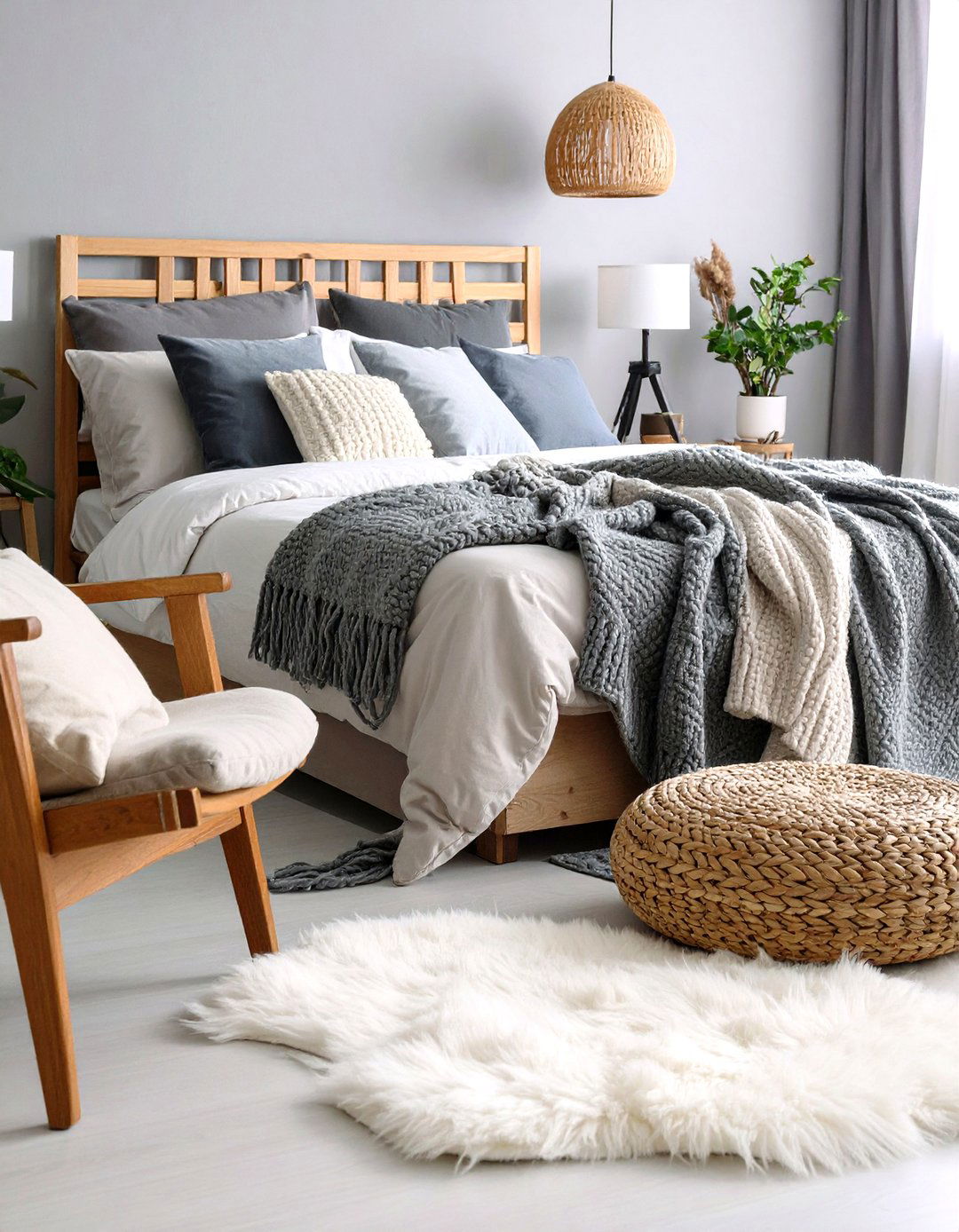
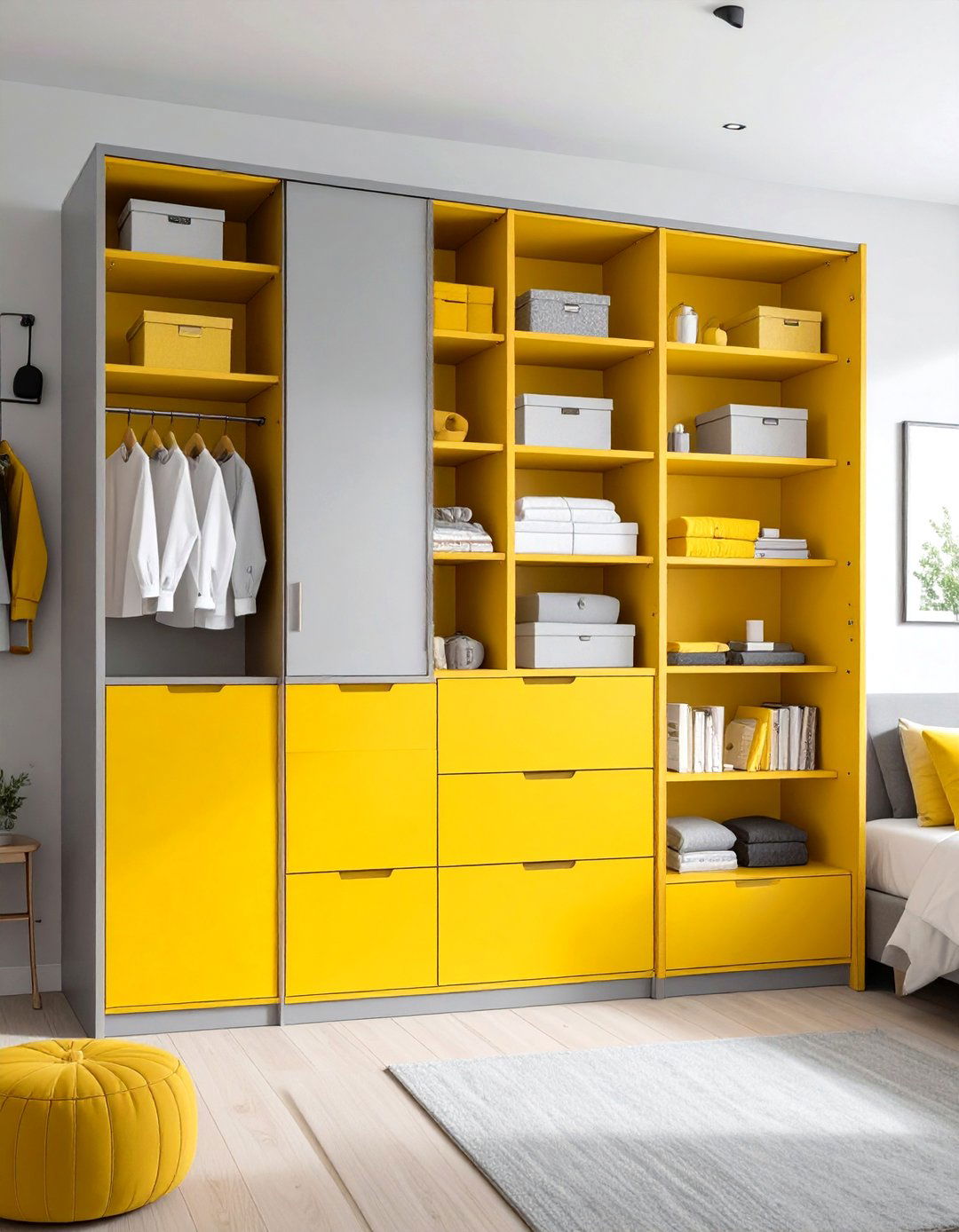
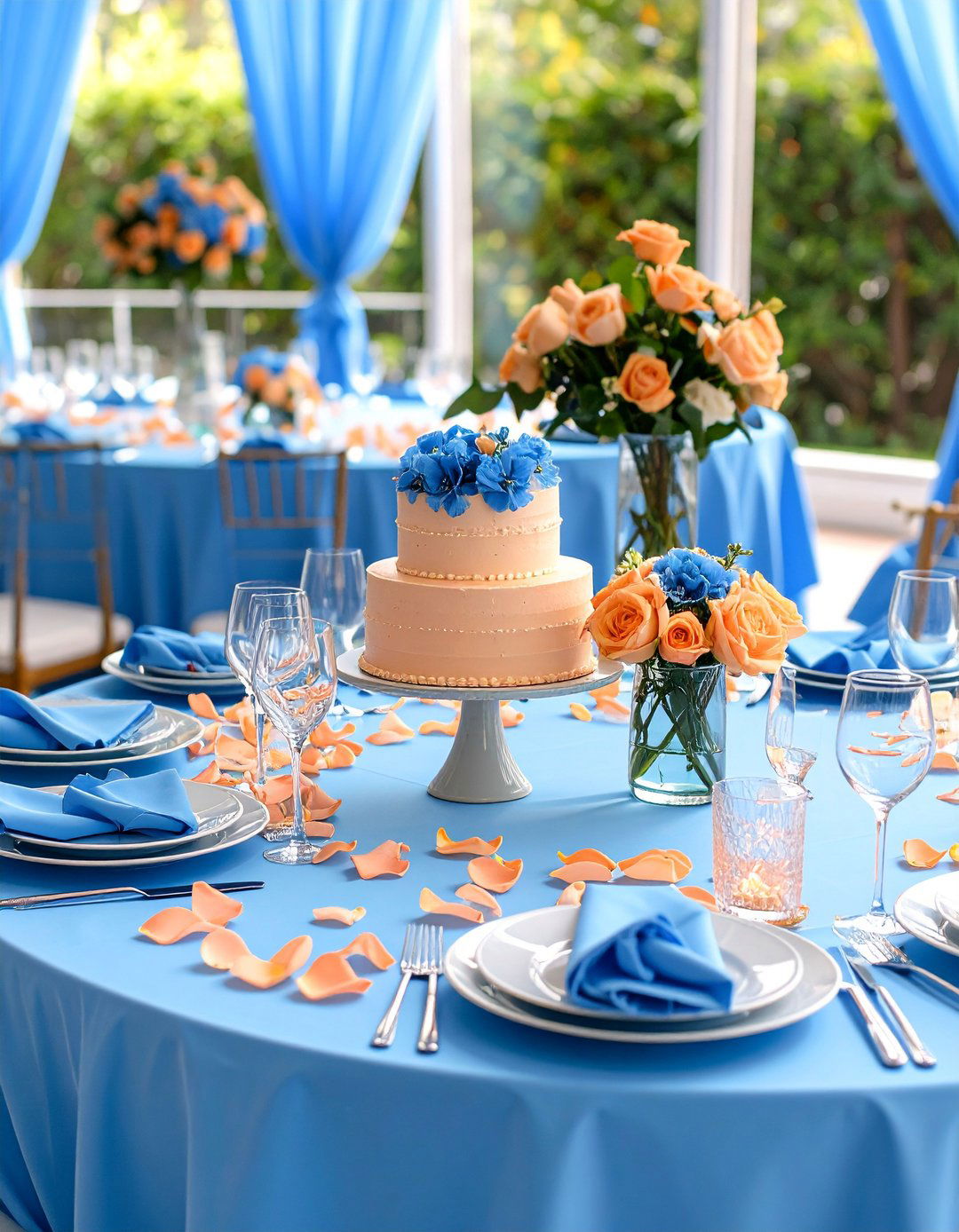
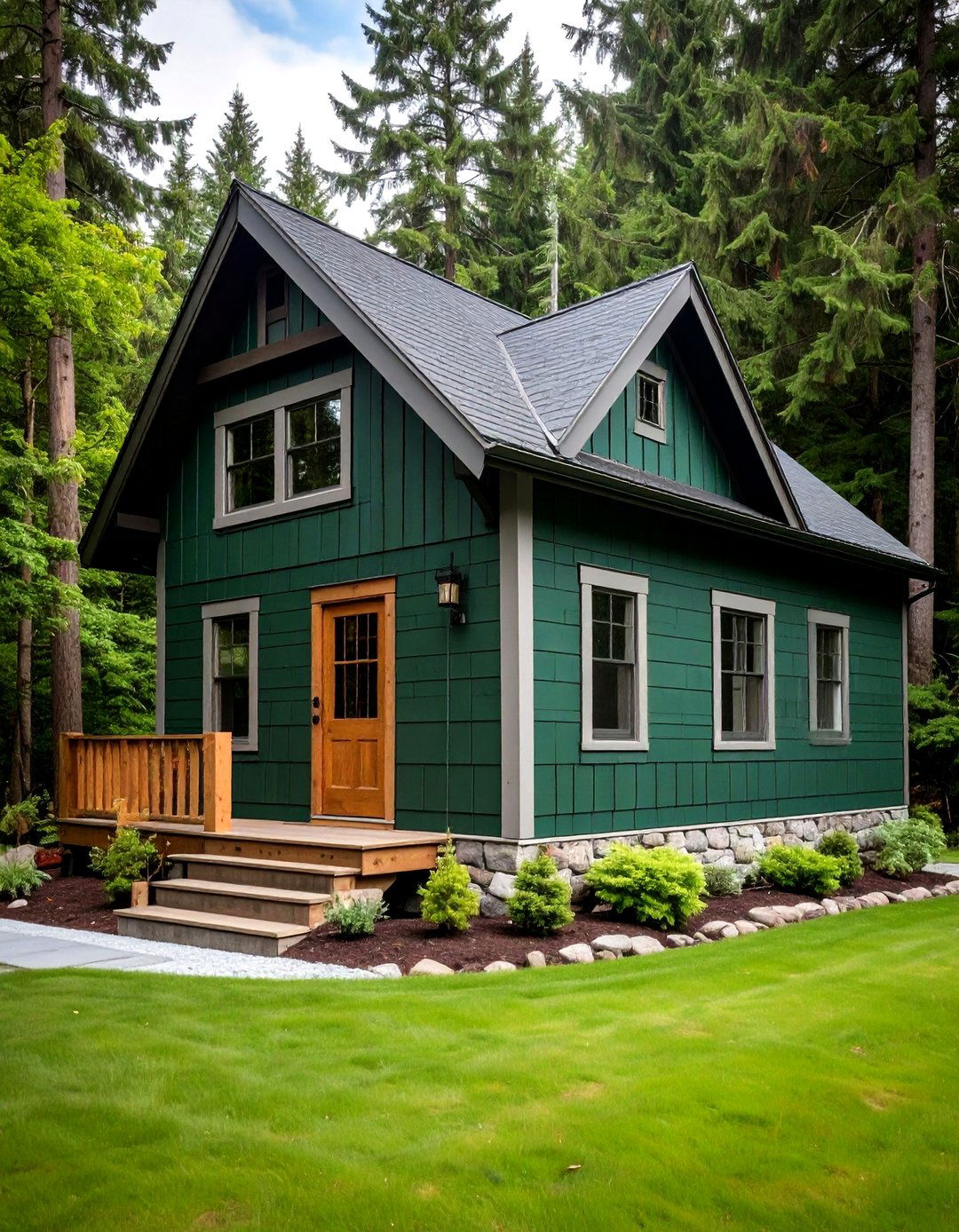
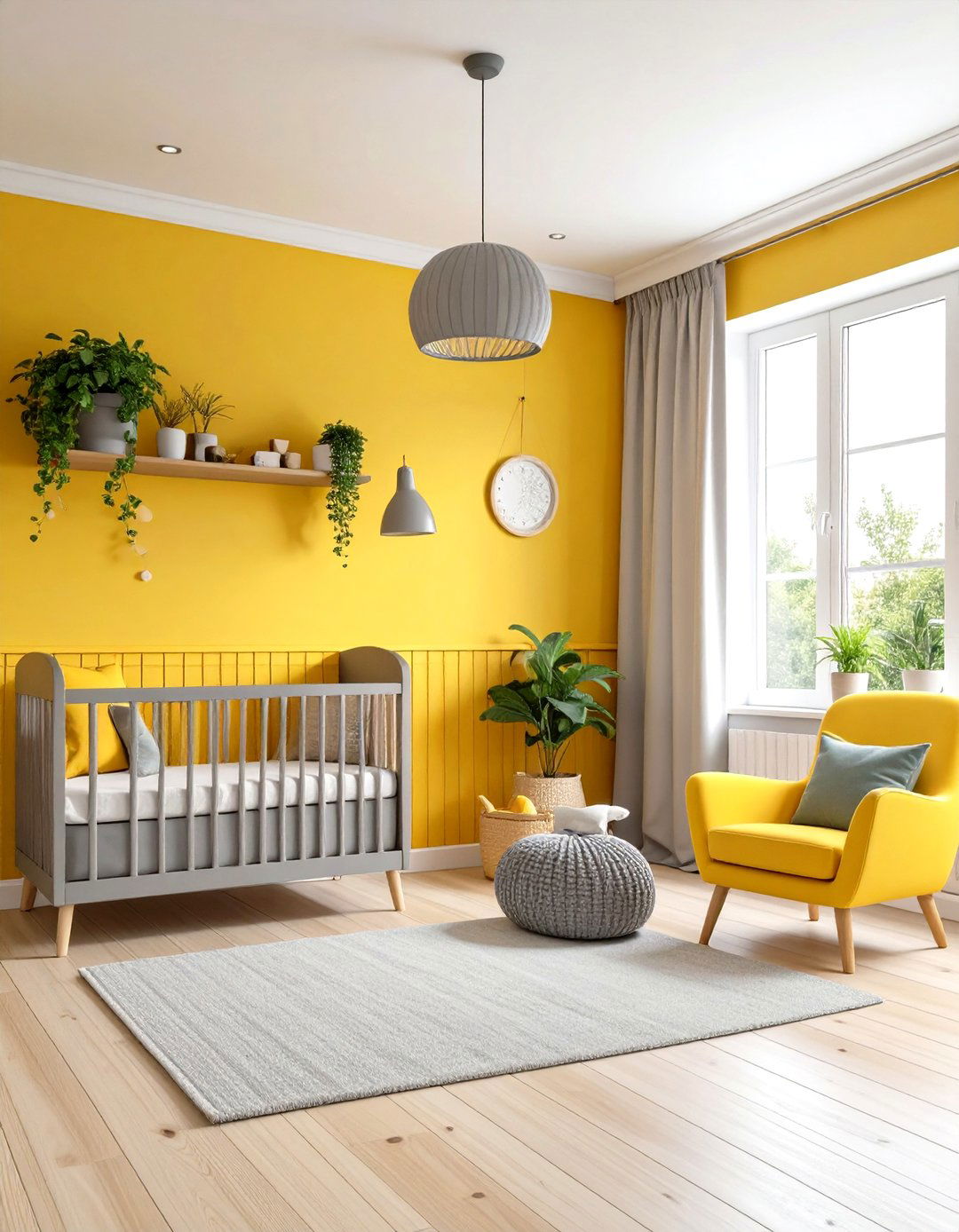
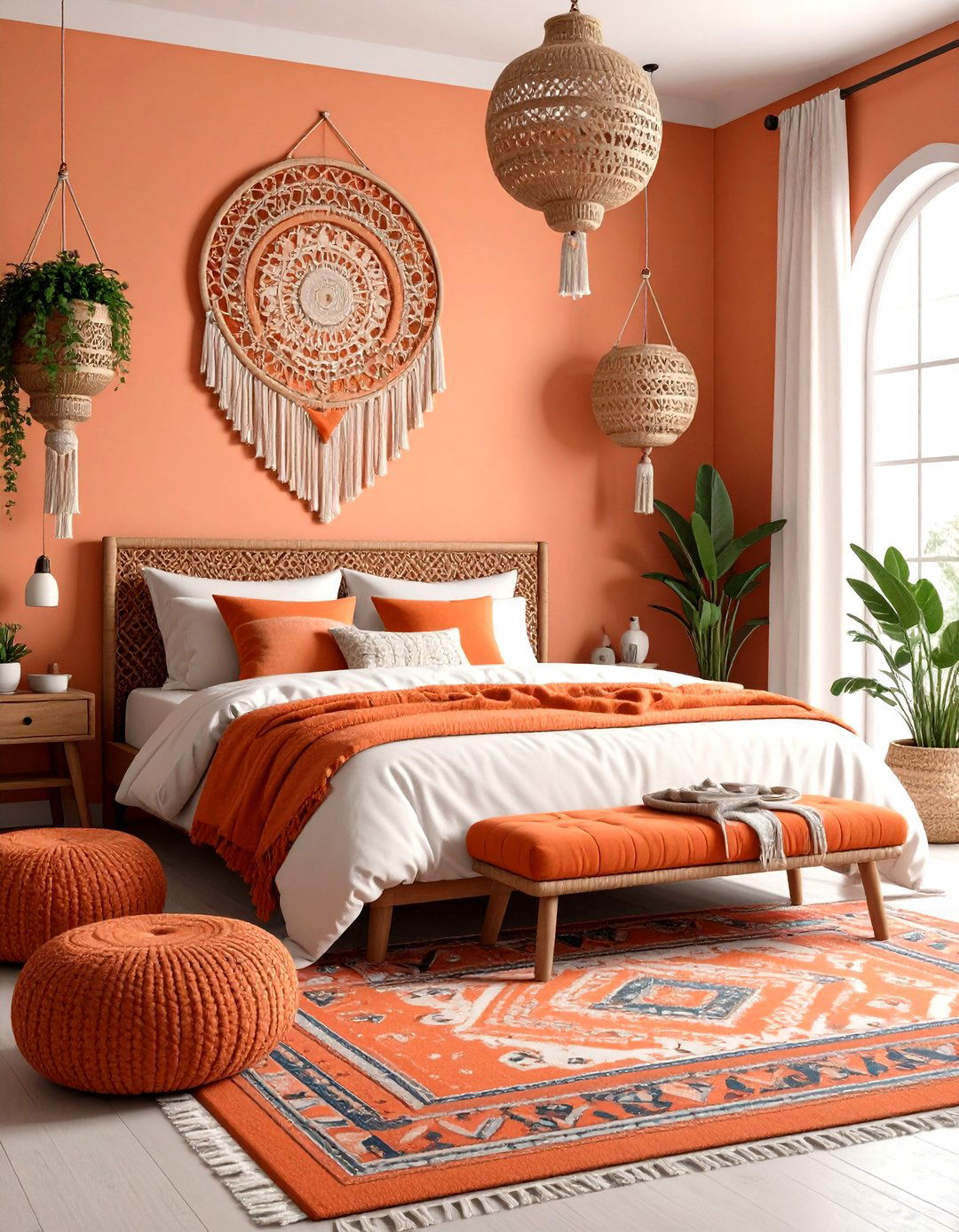
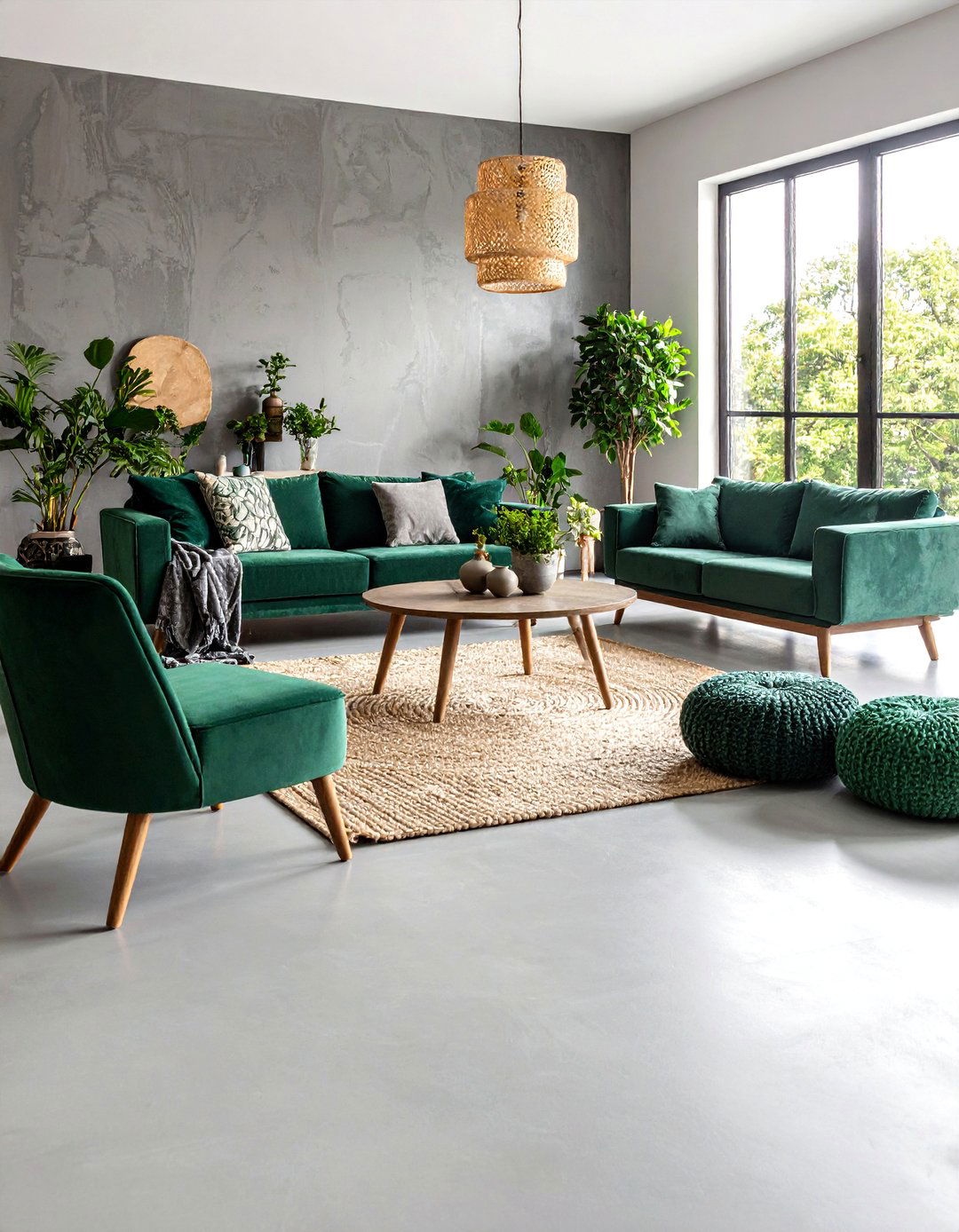
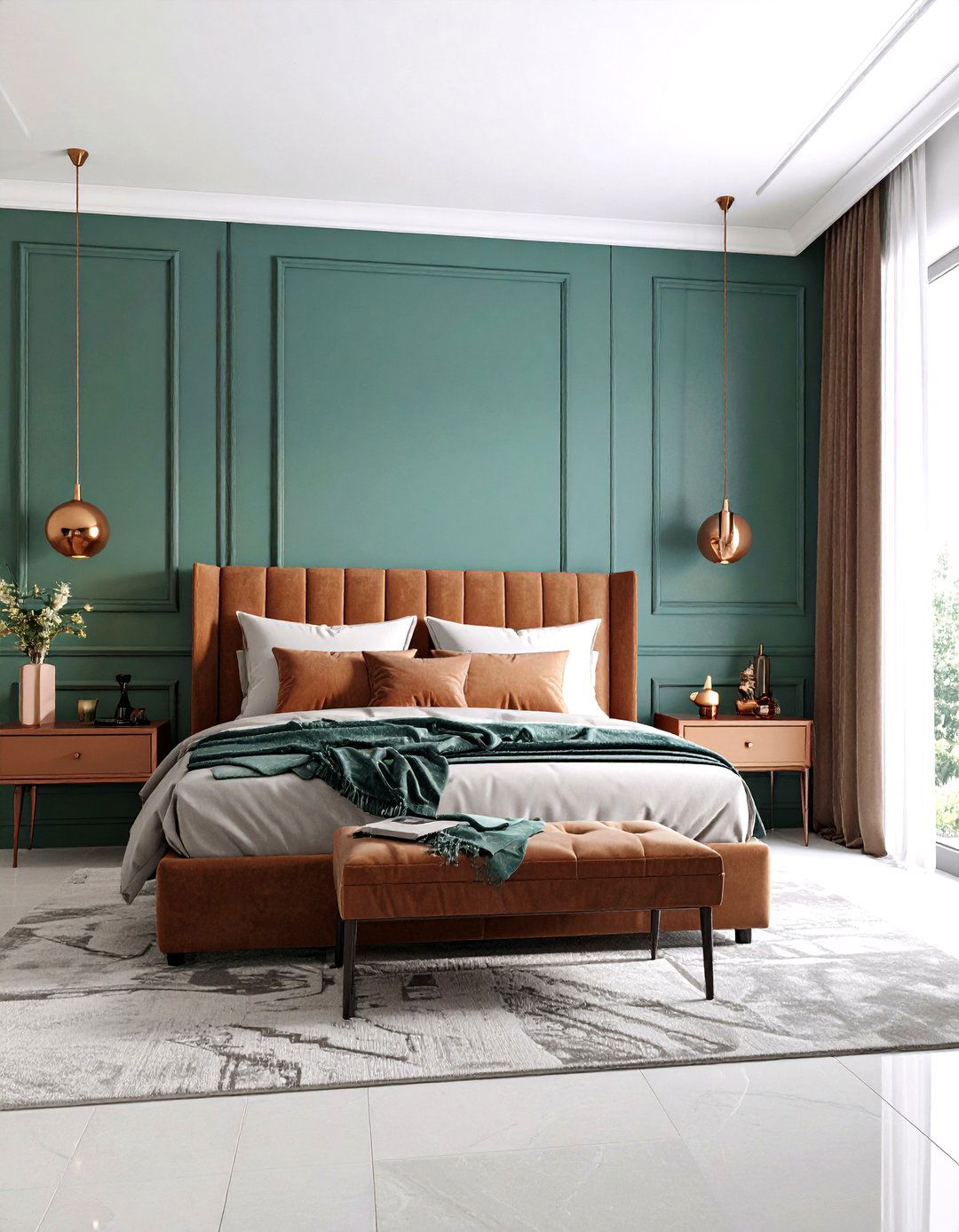
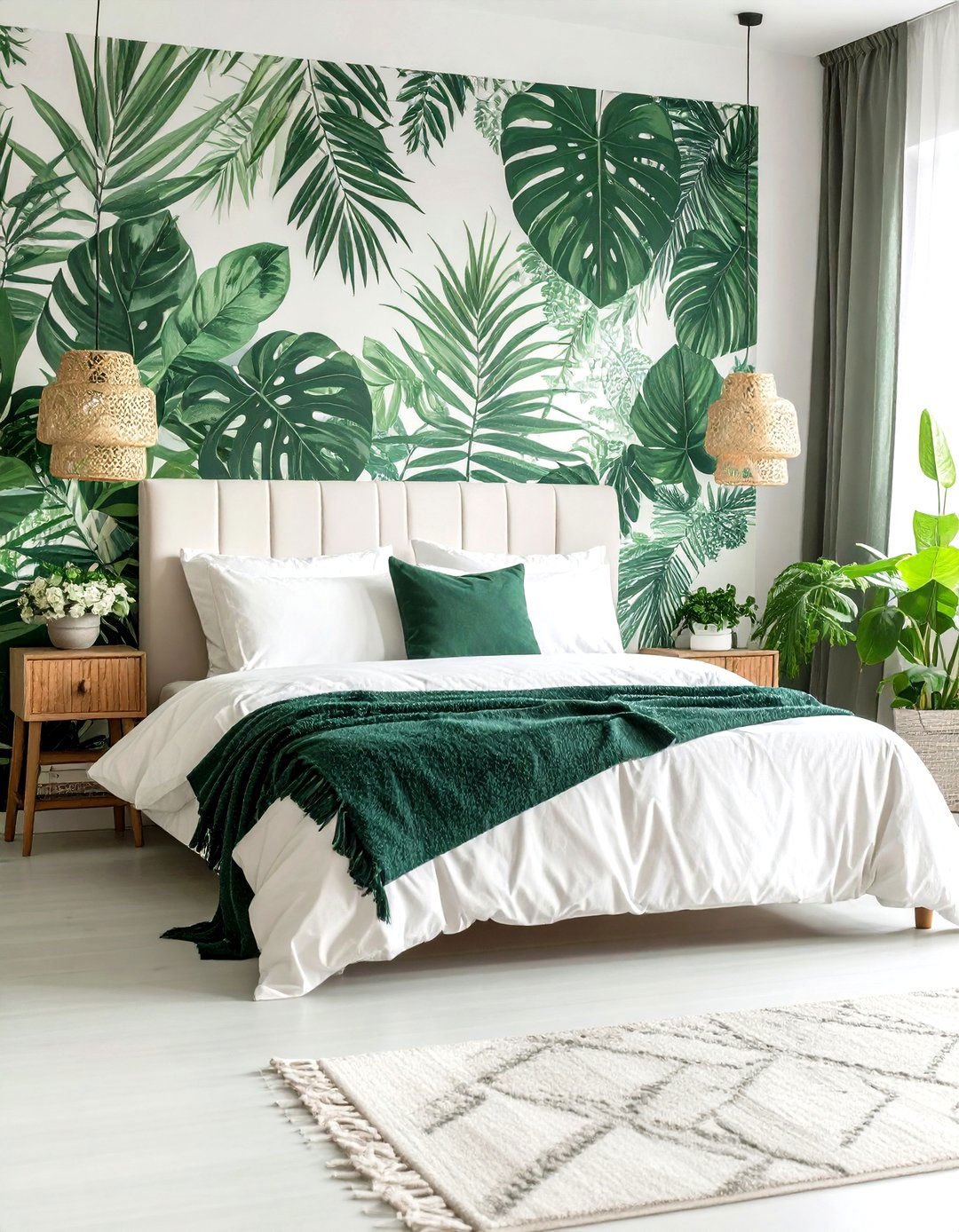
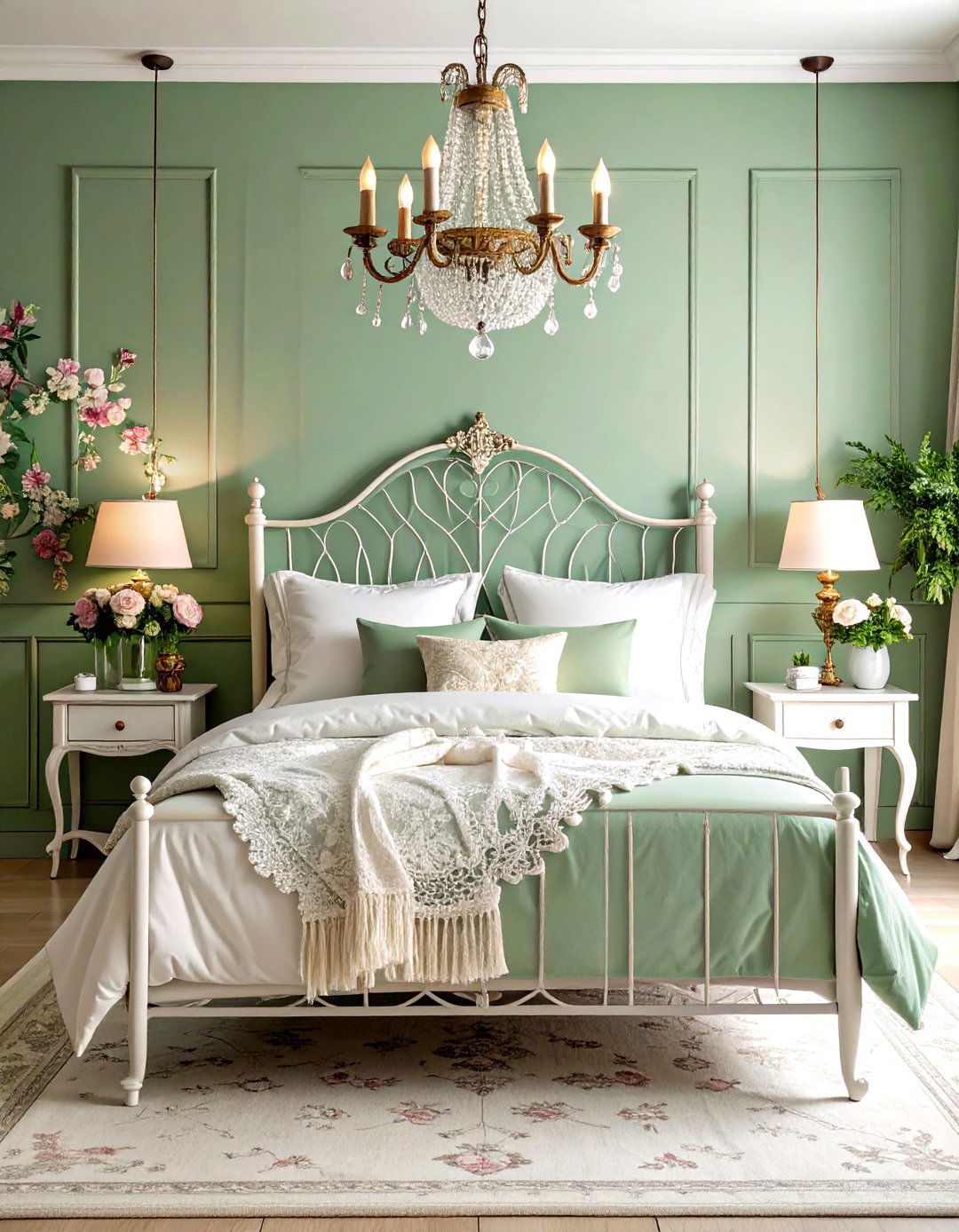
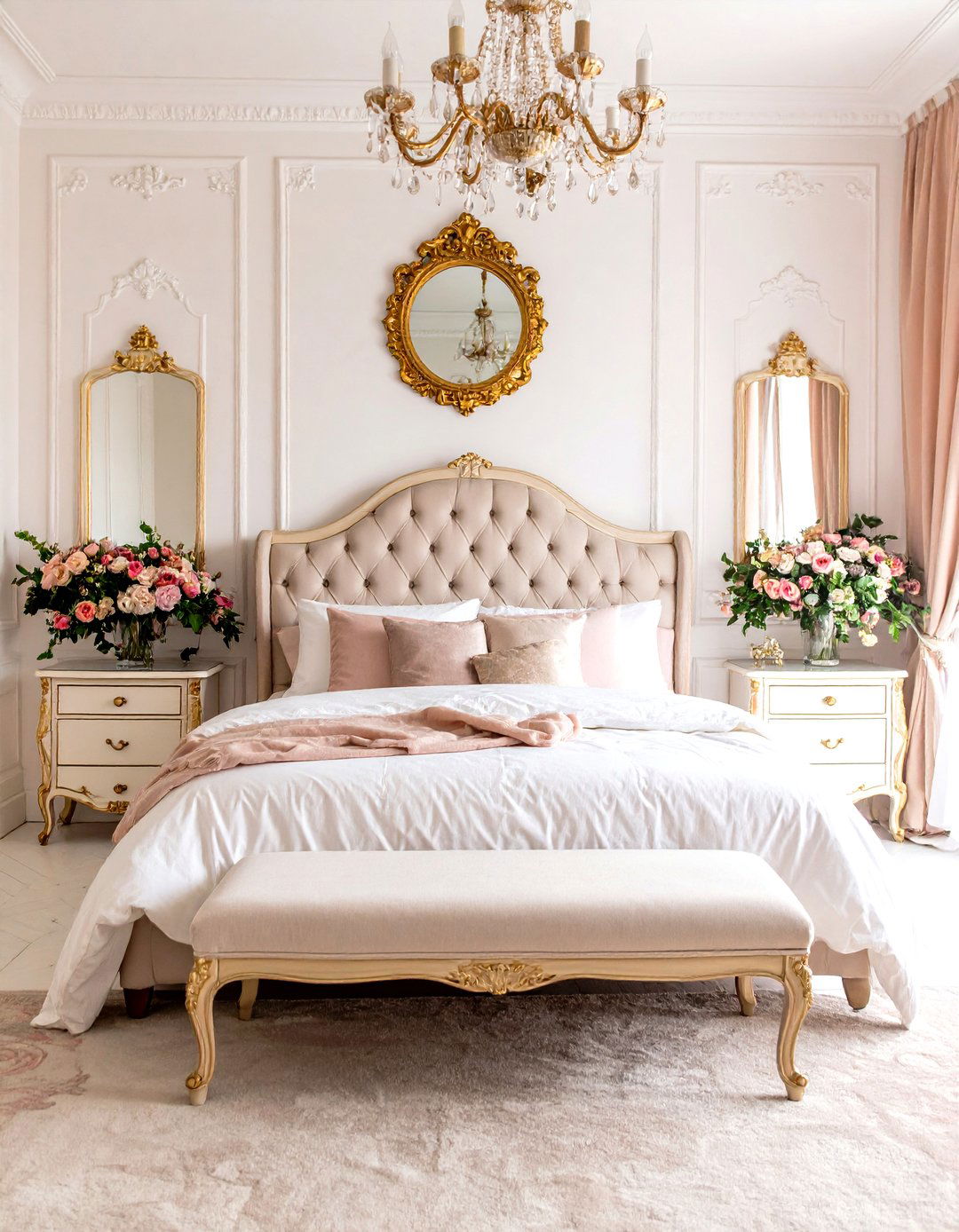
Leave a Reply